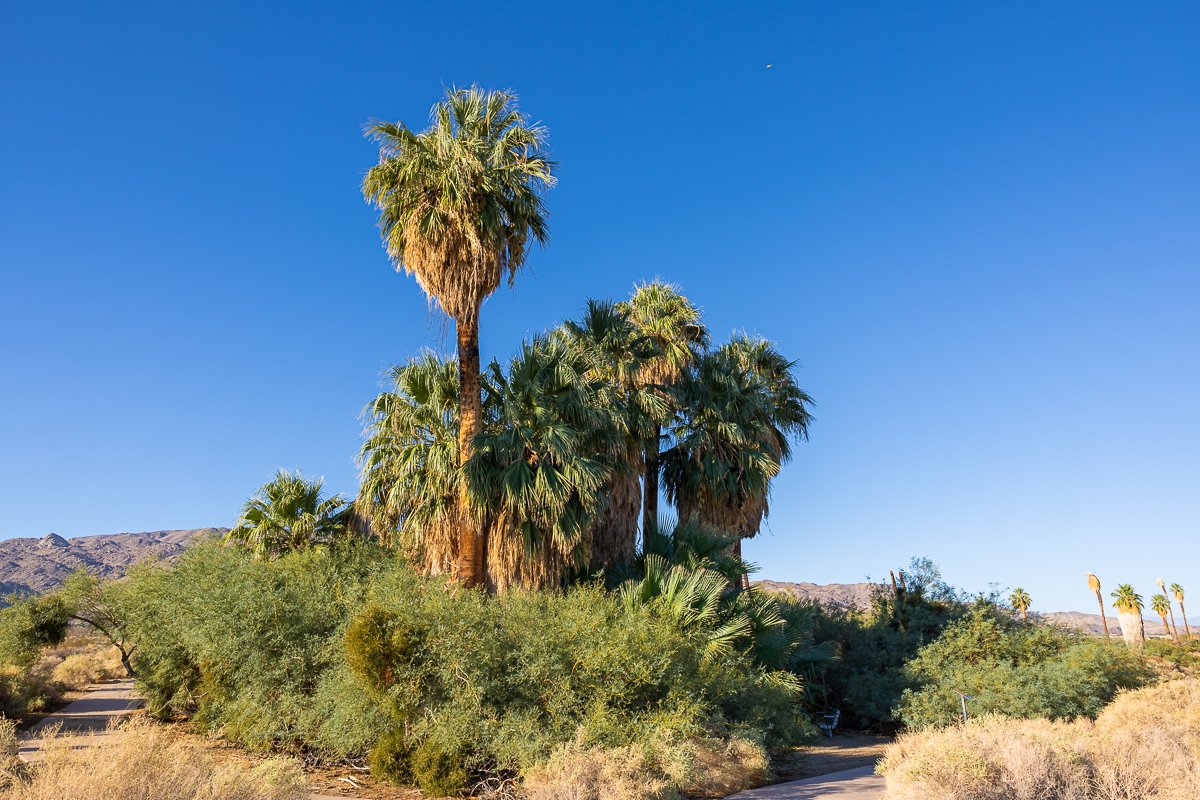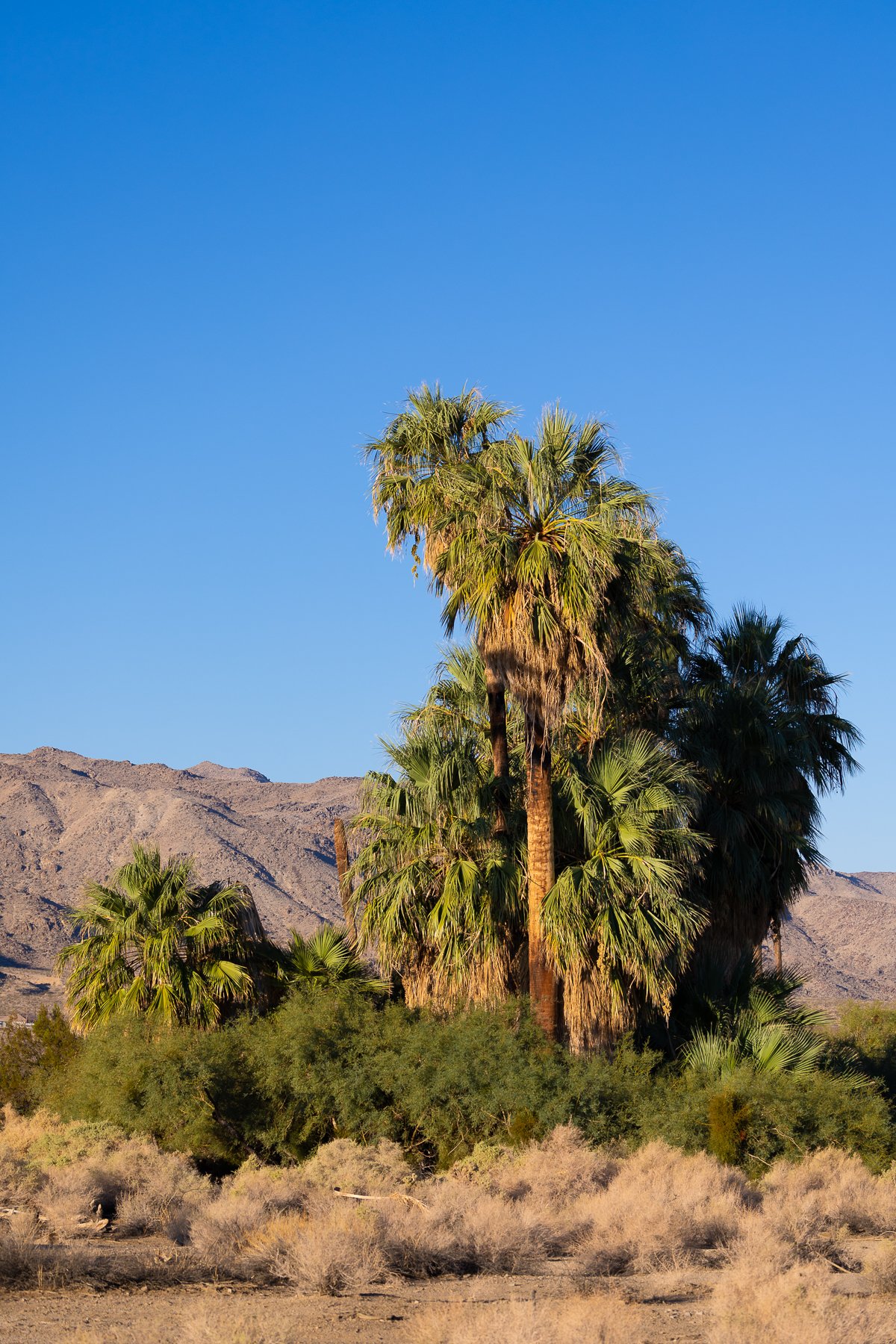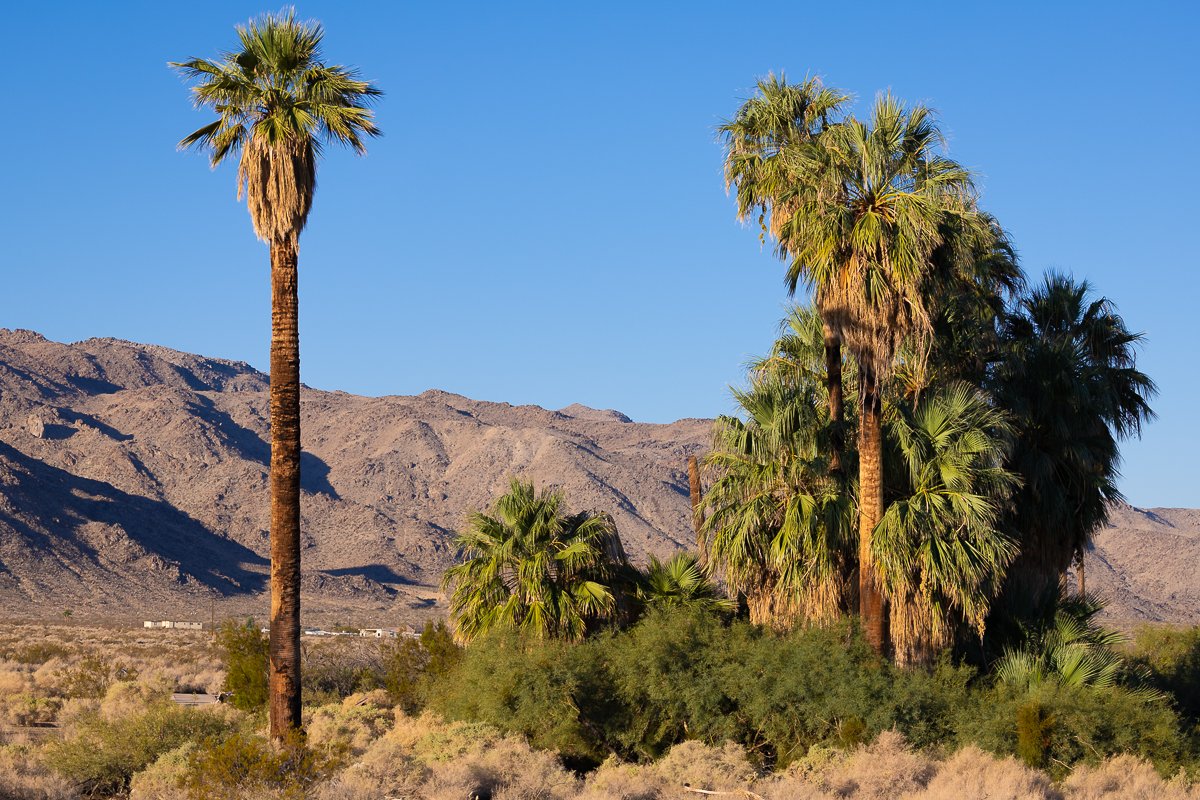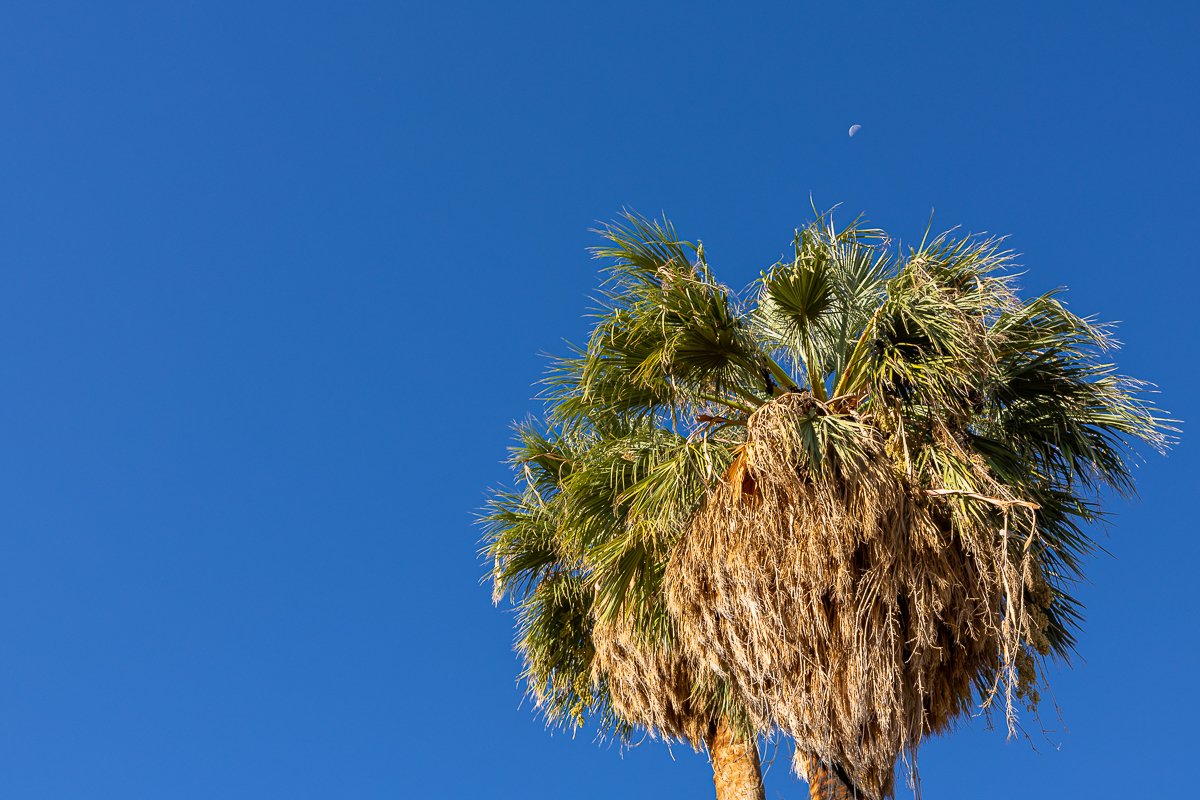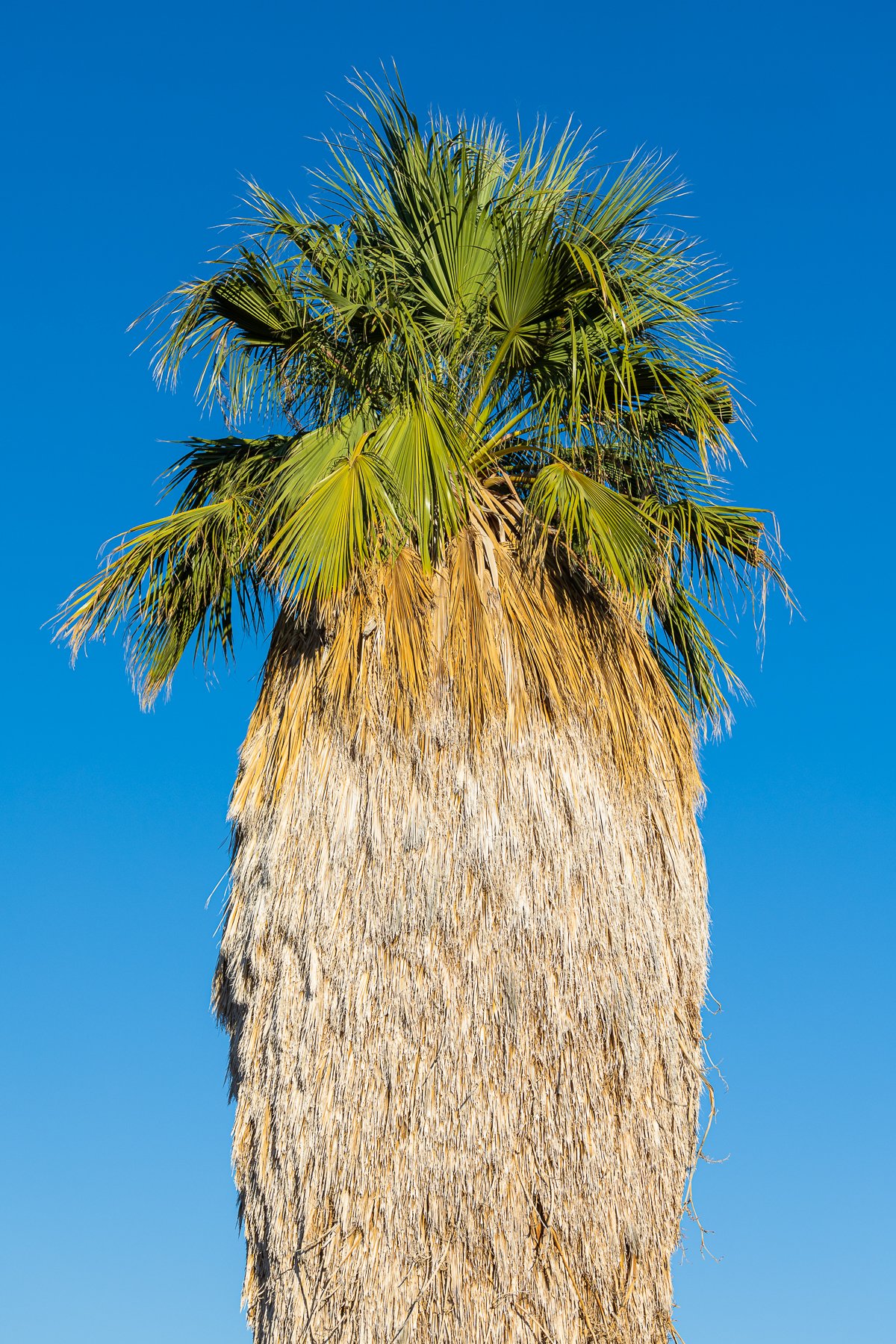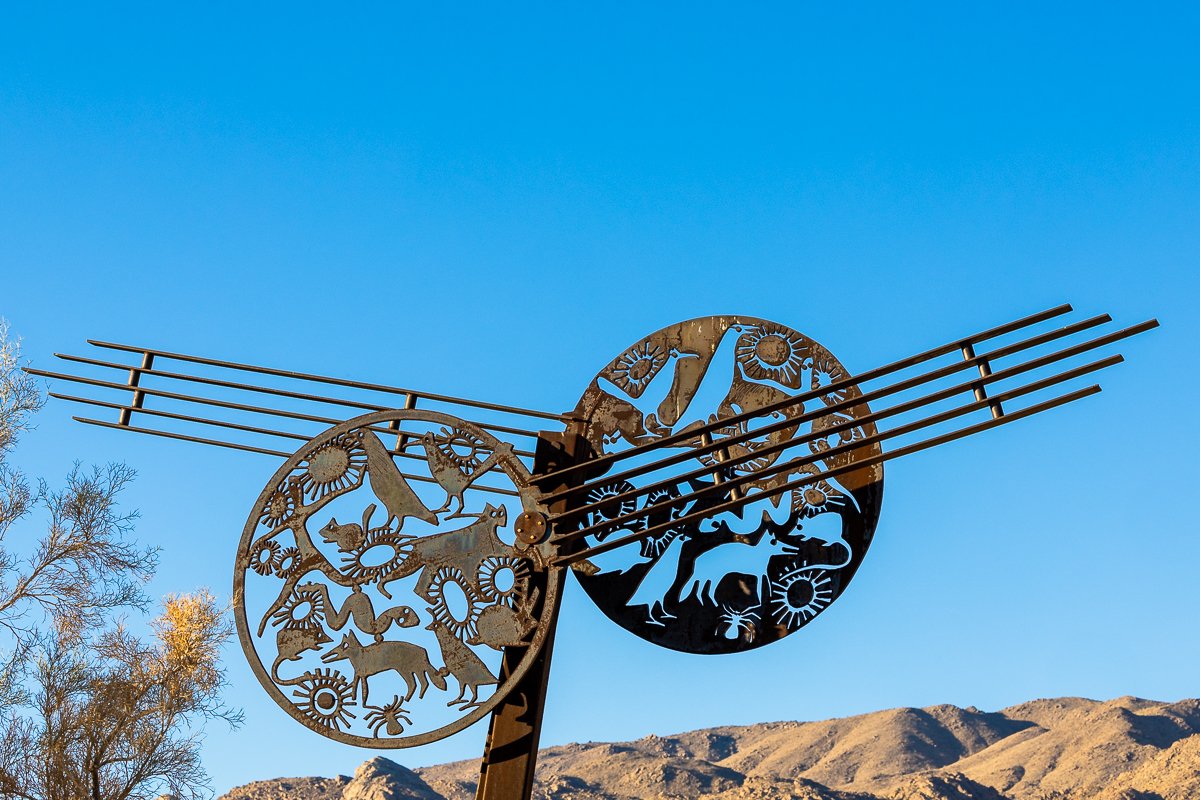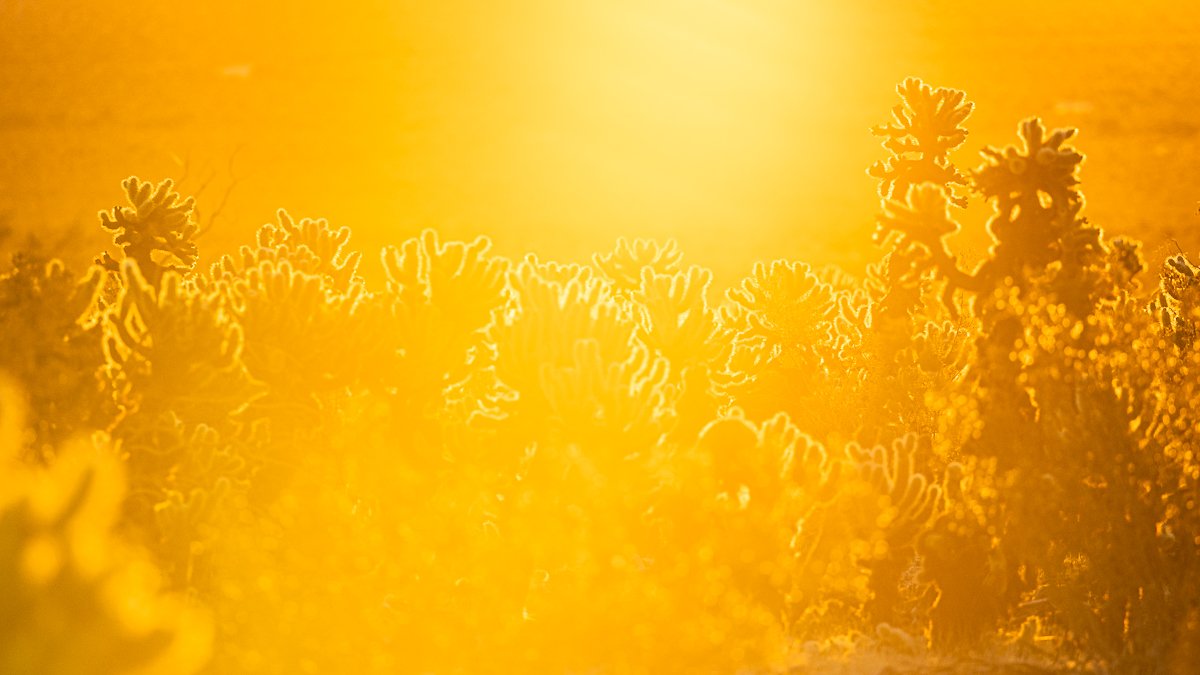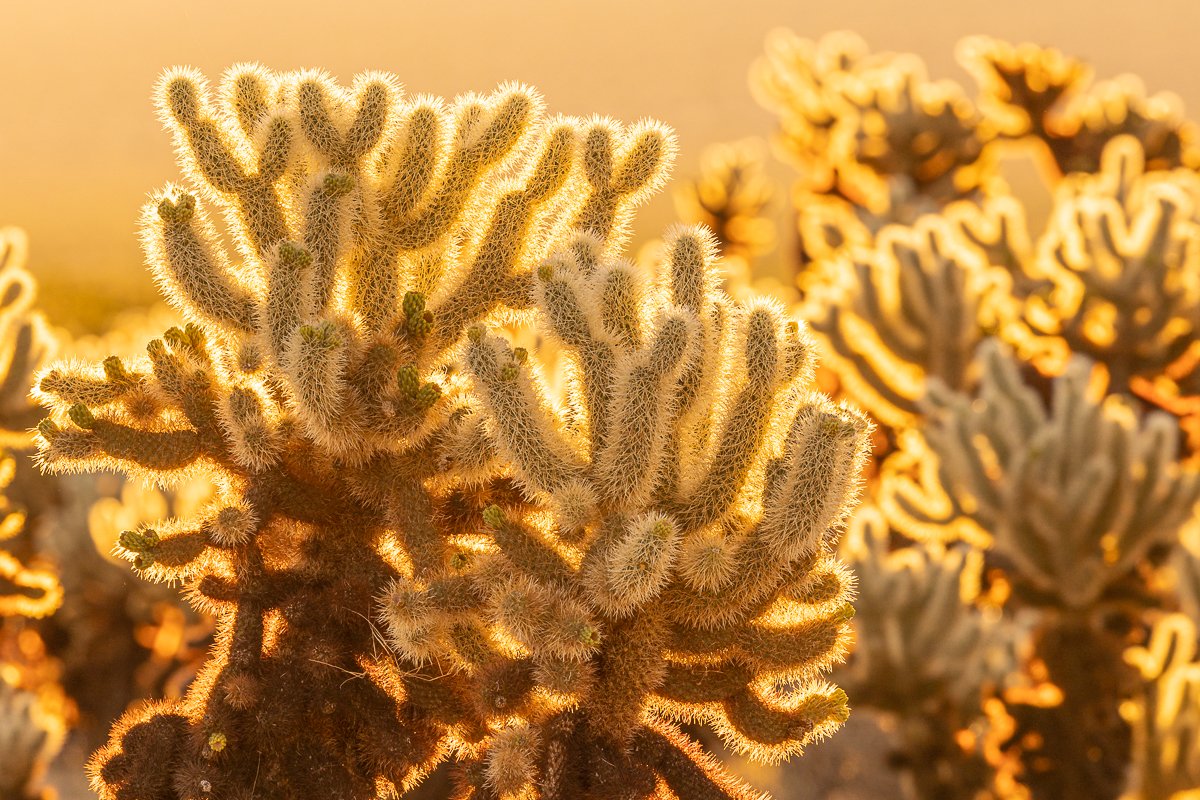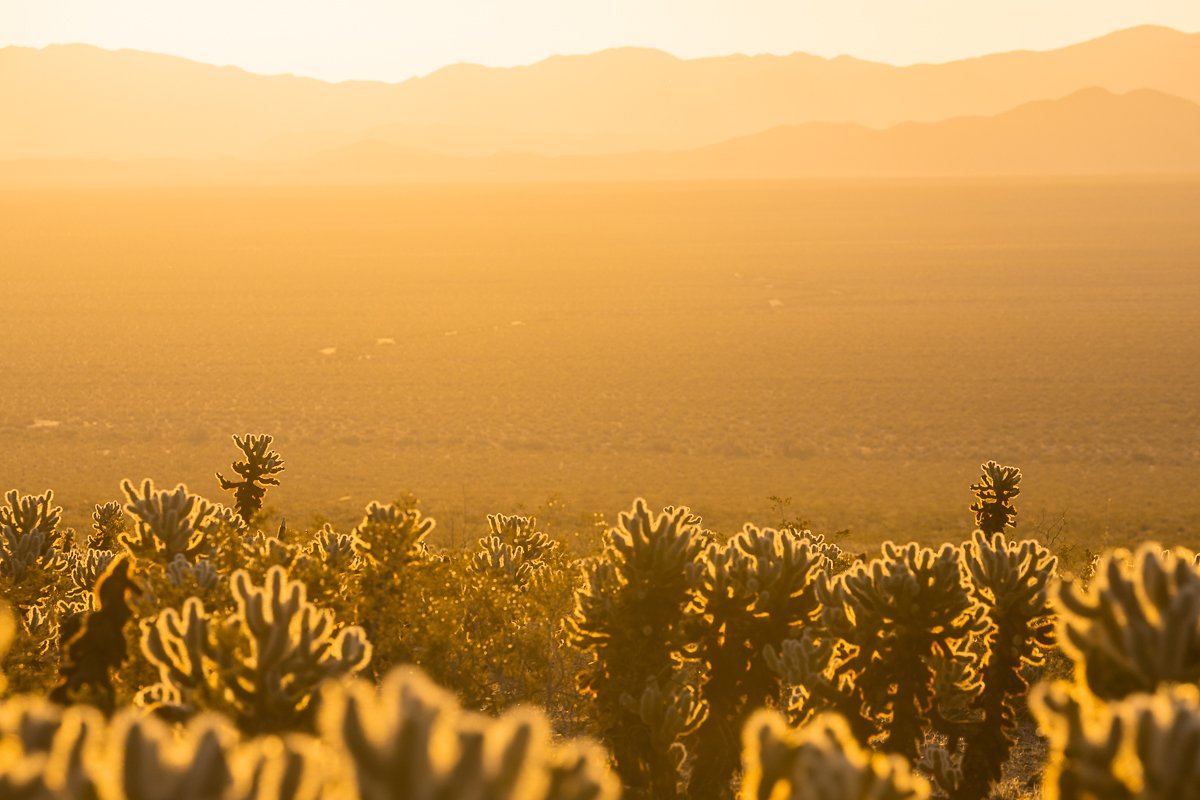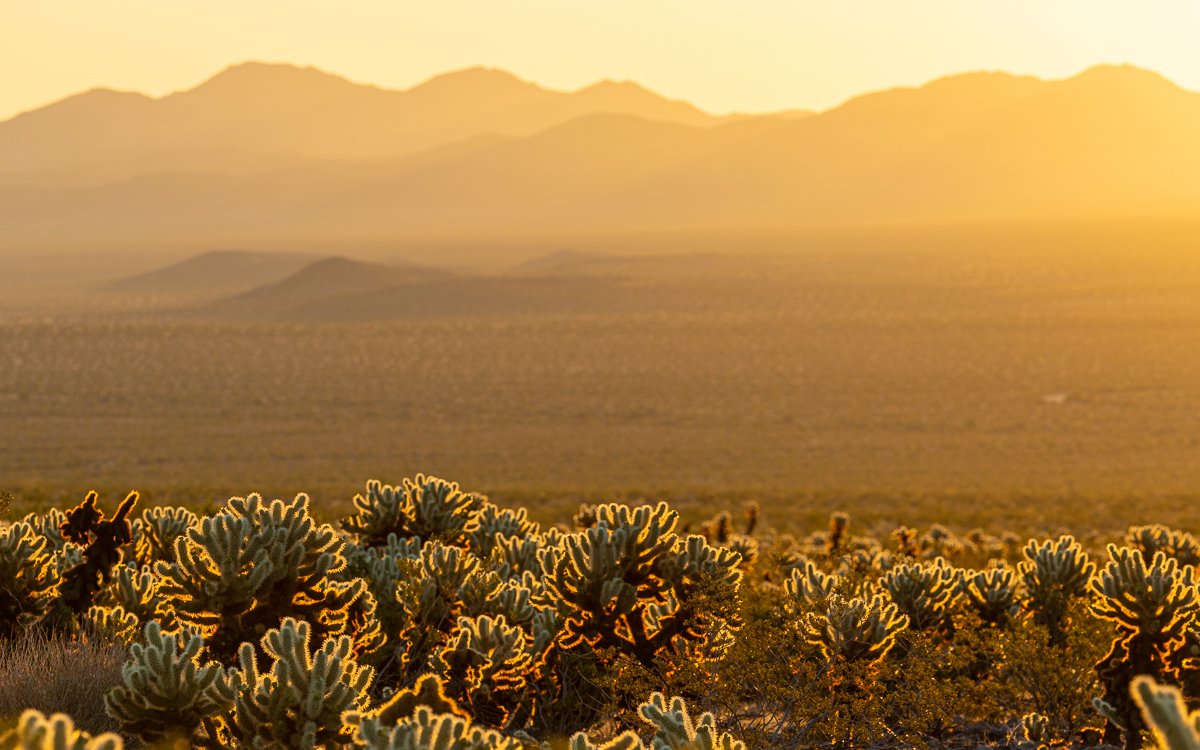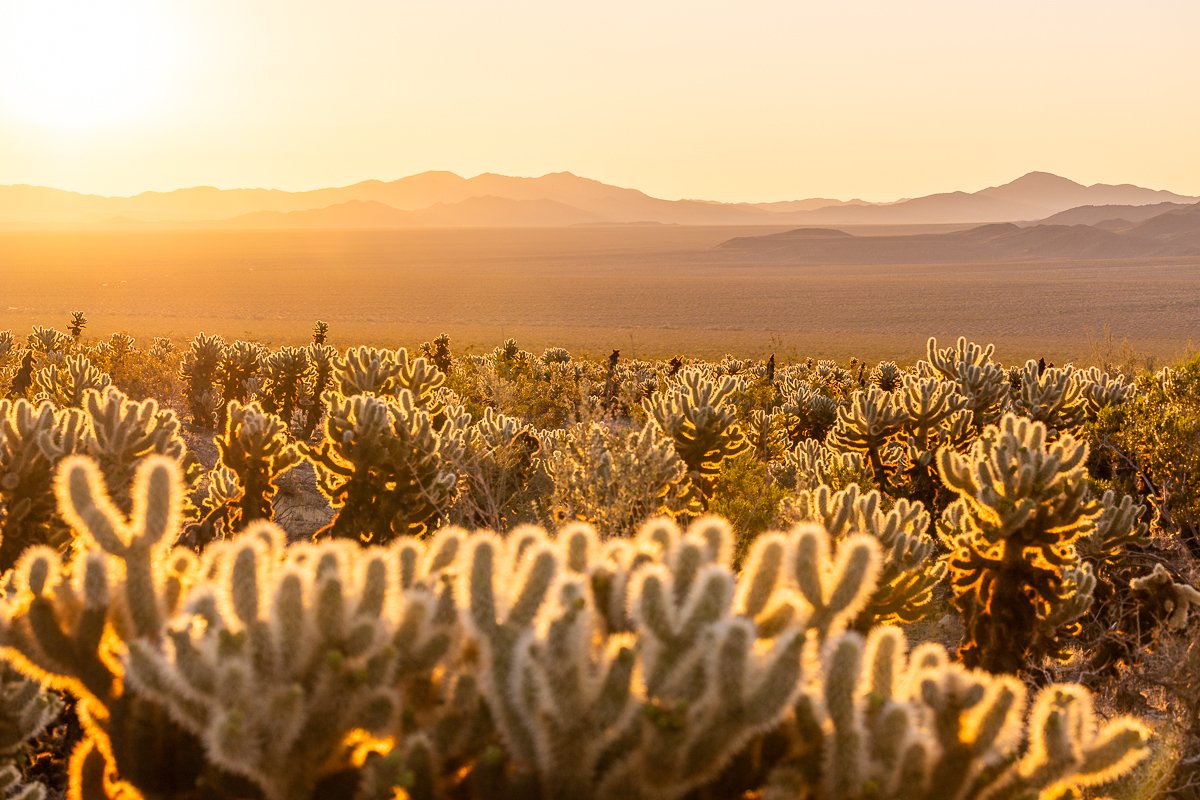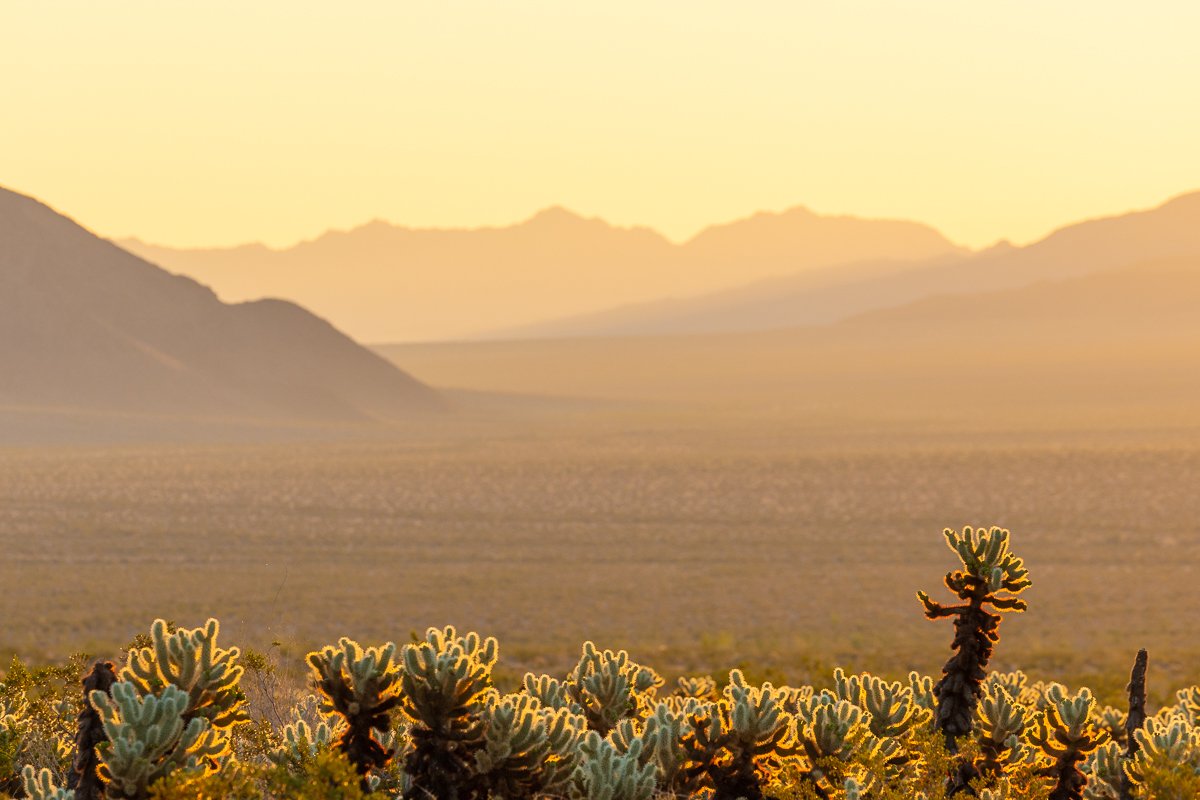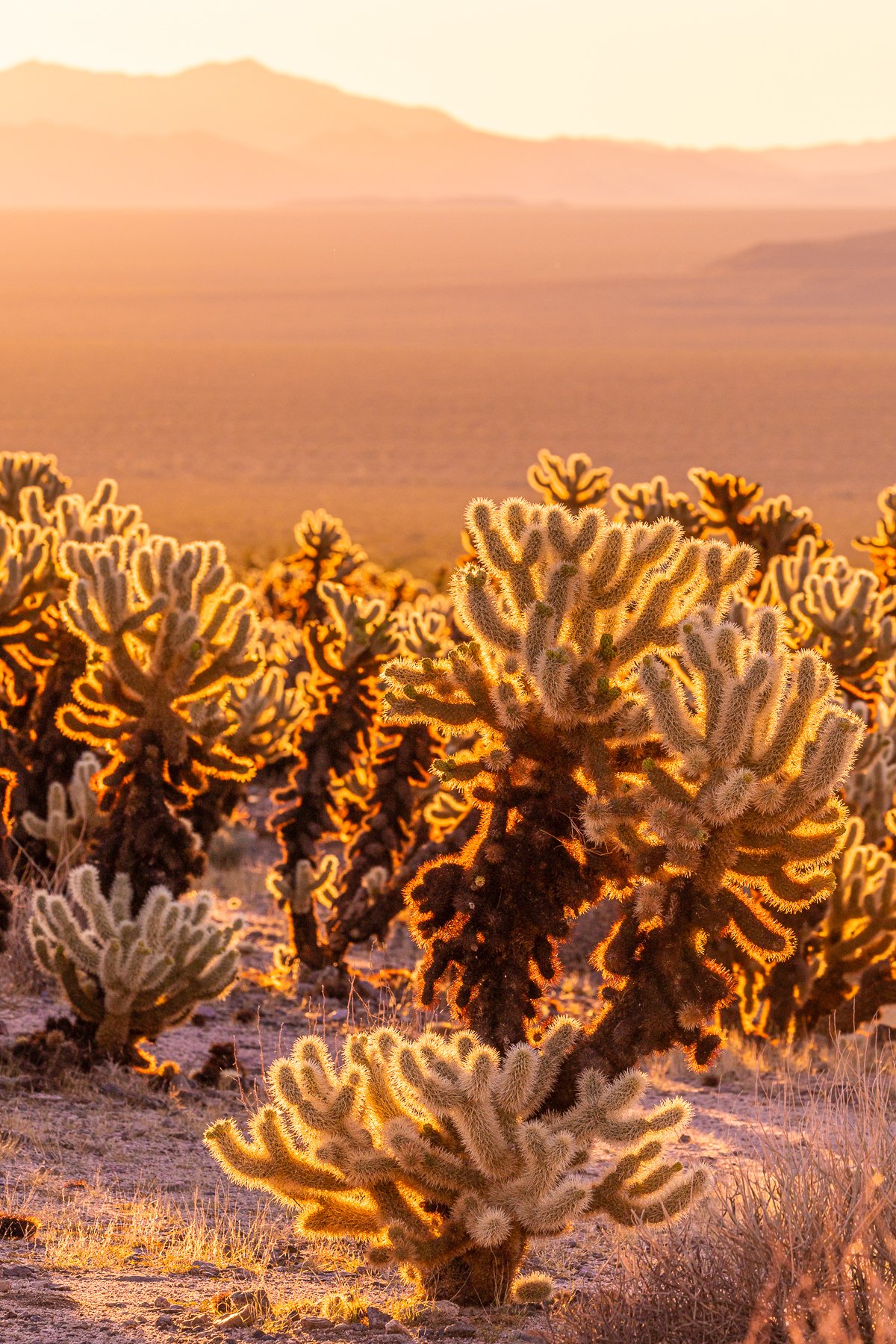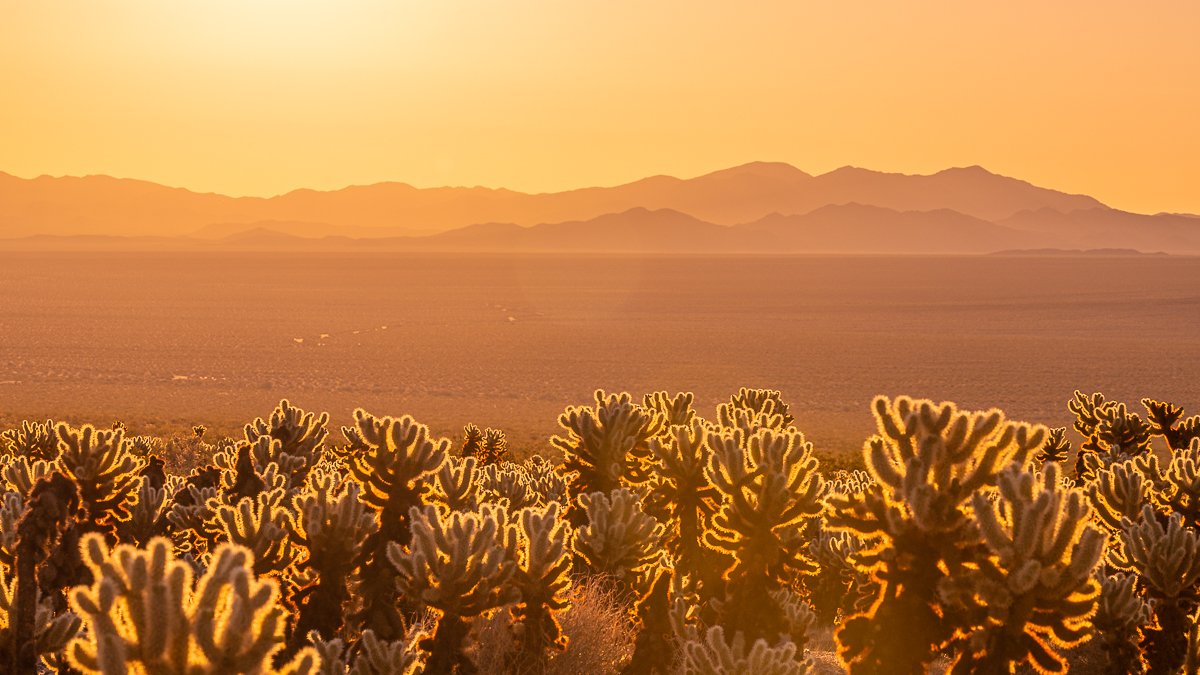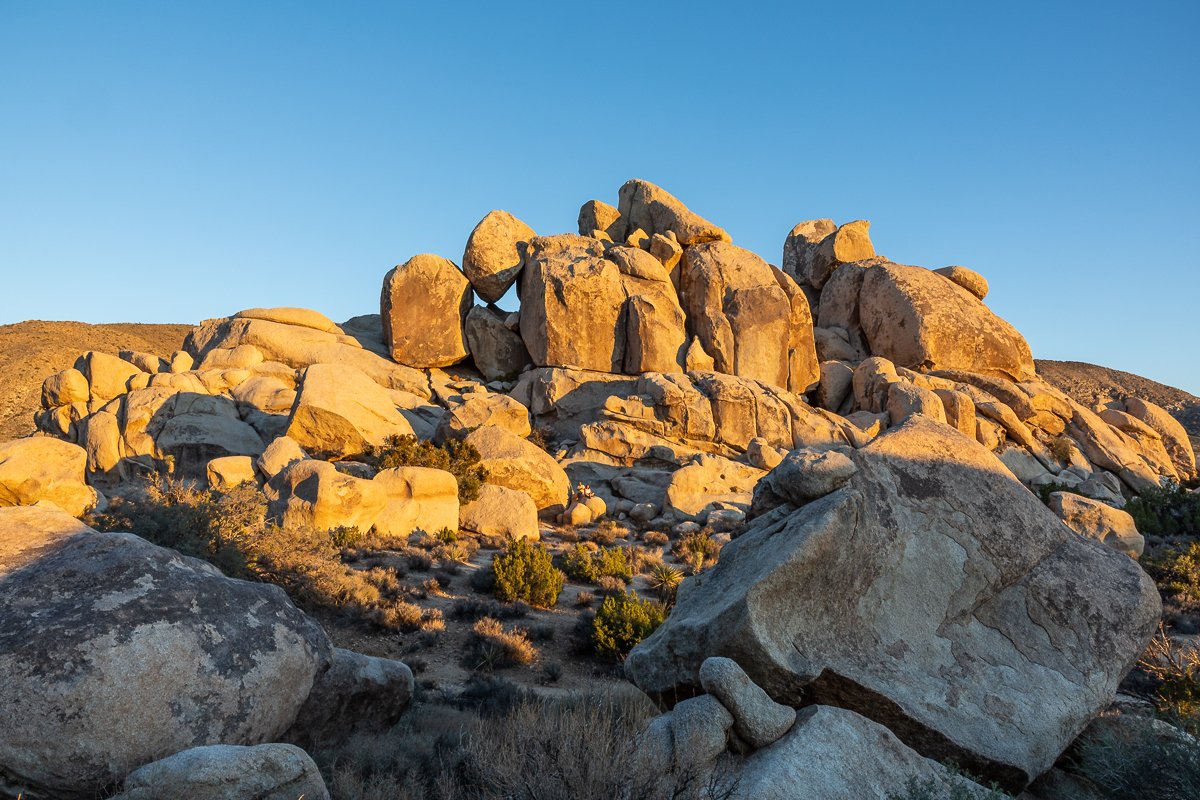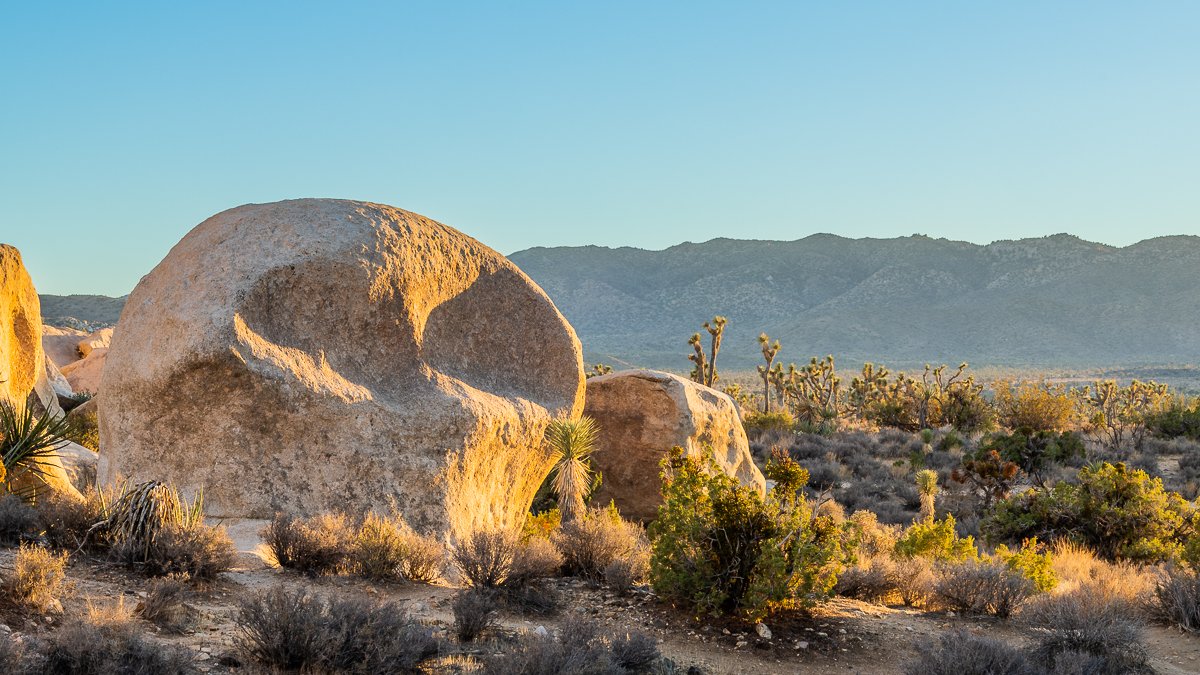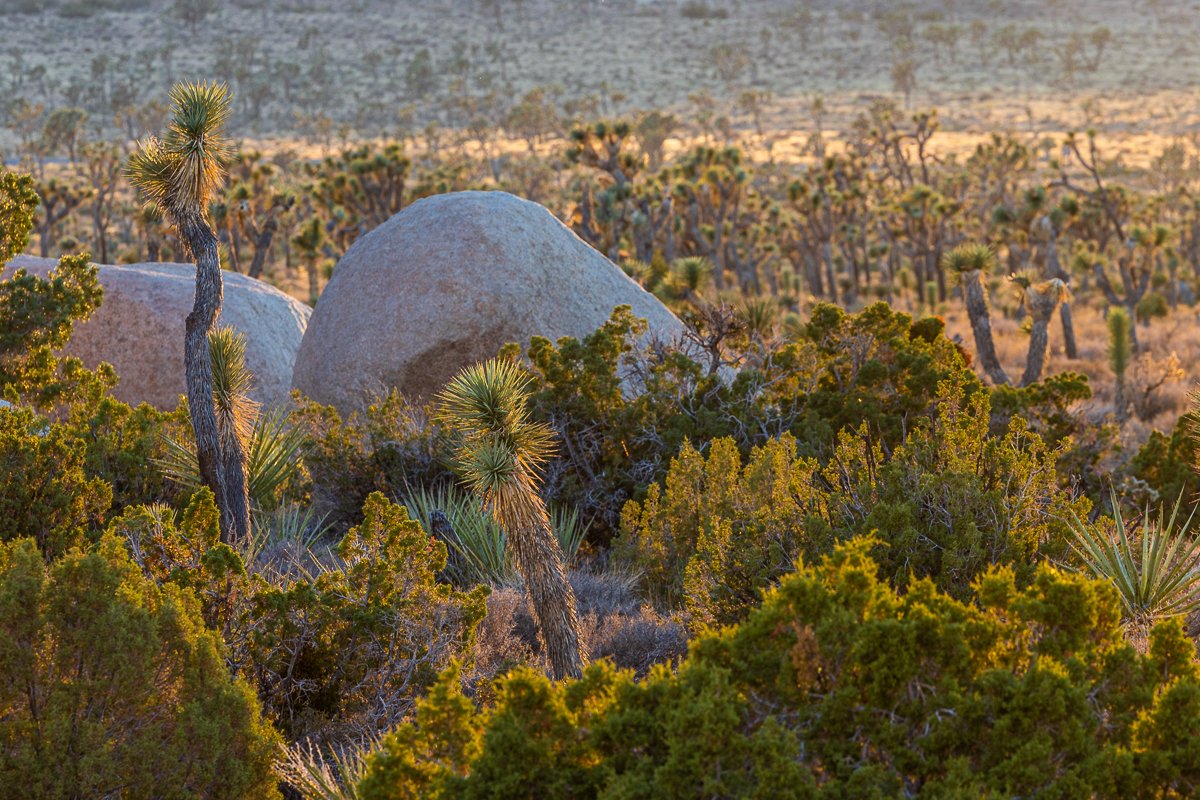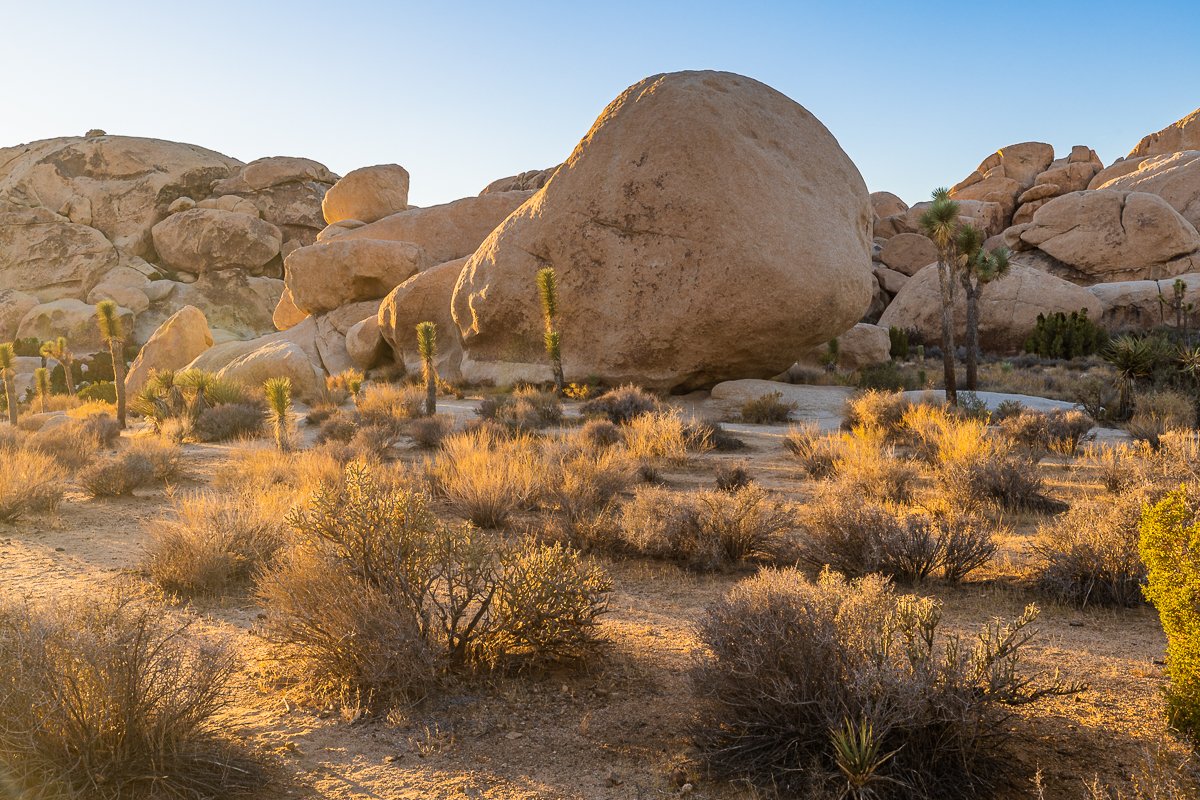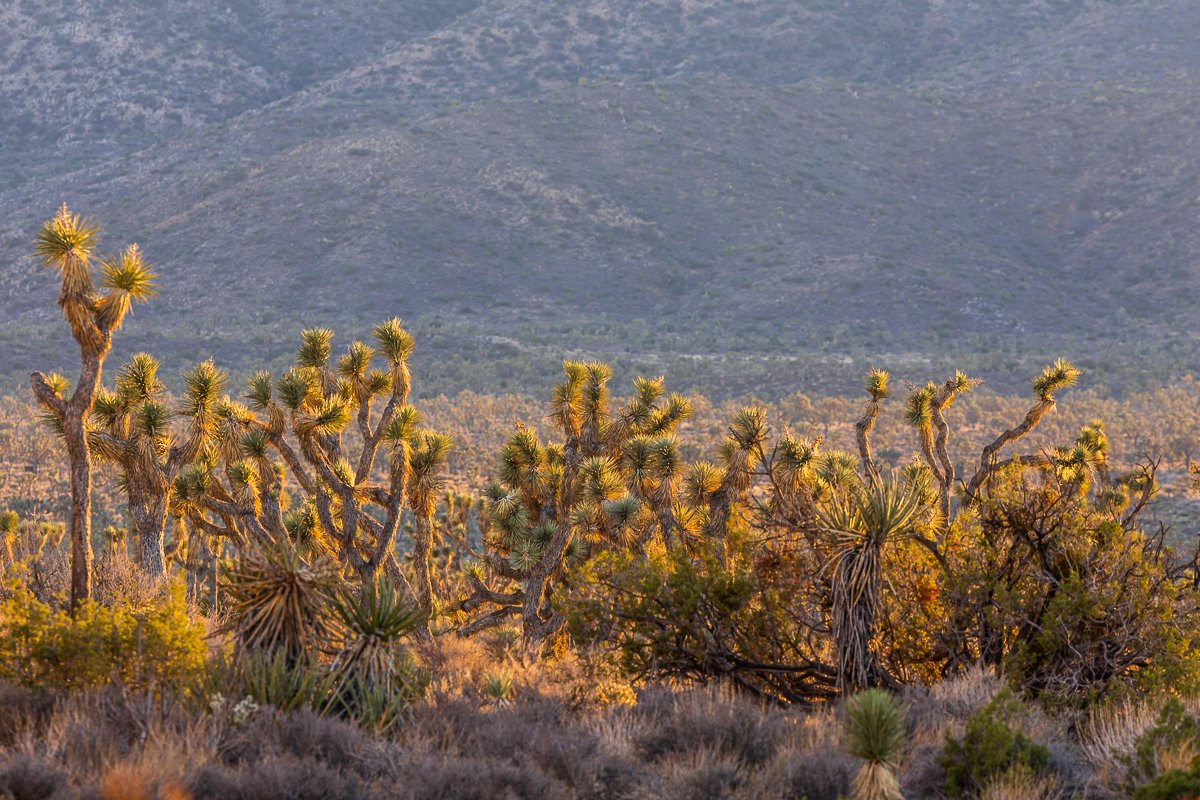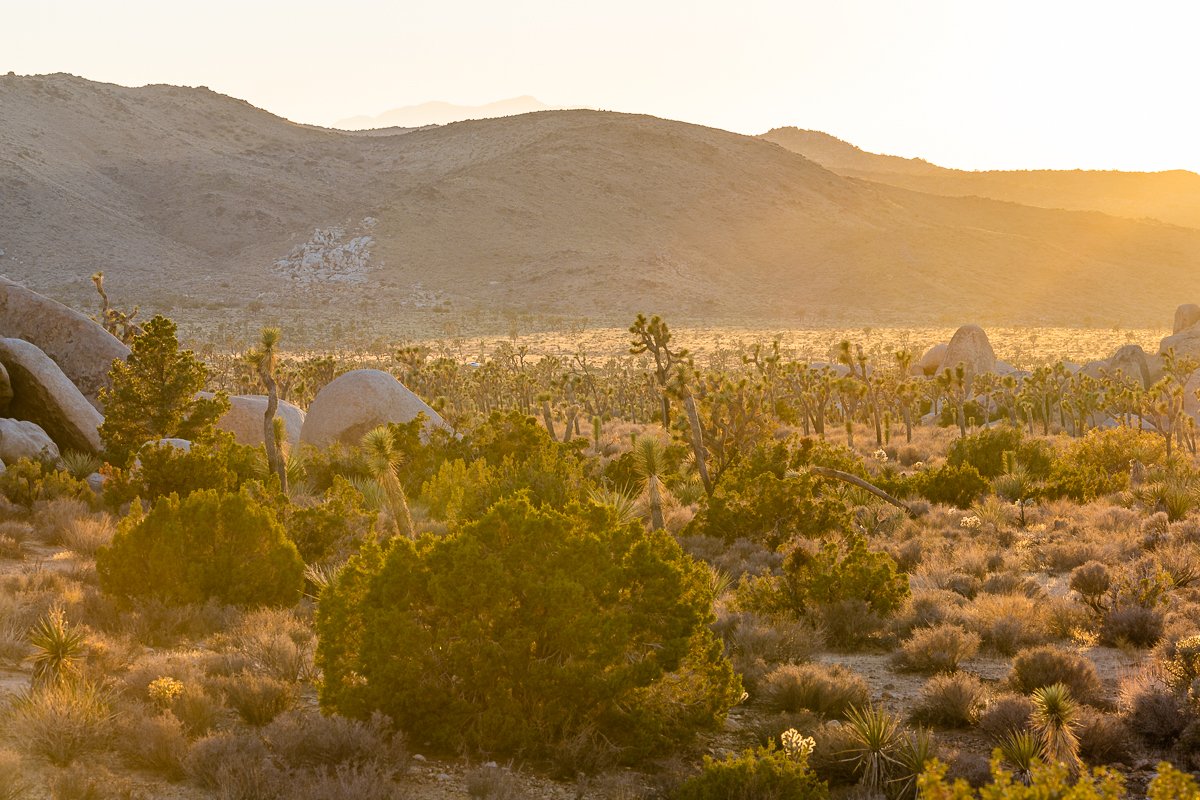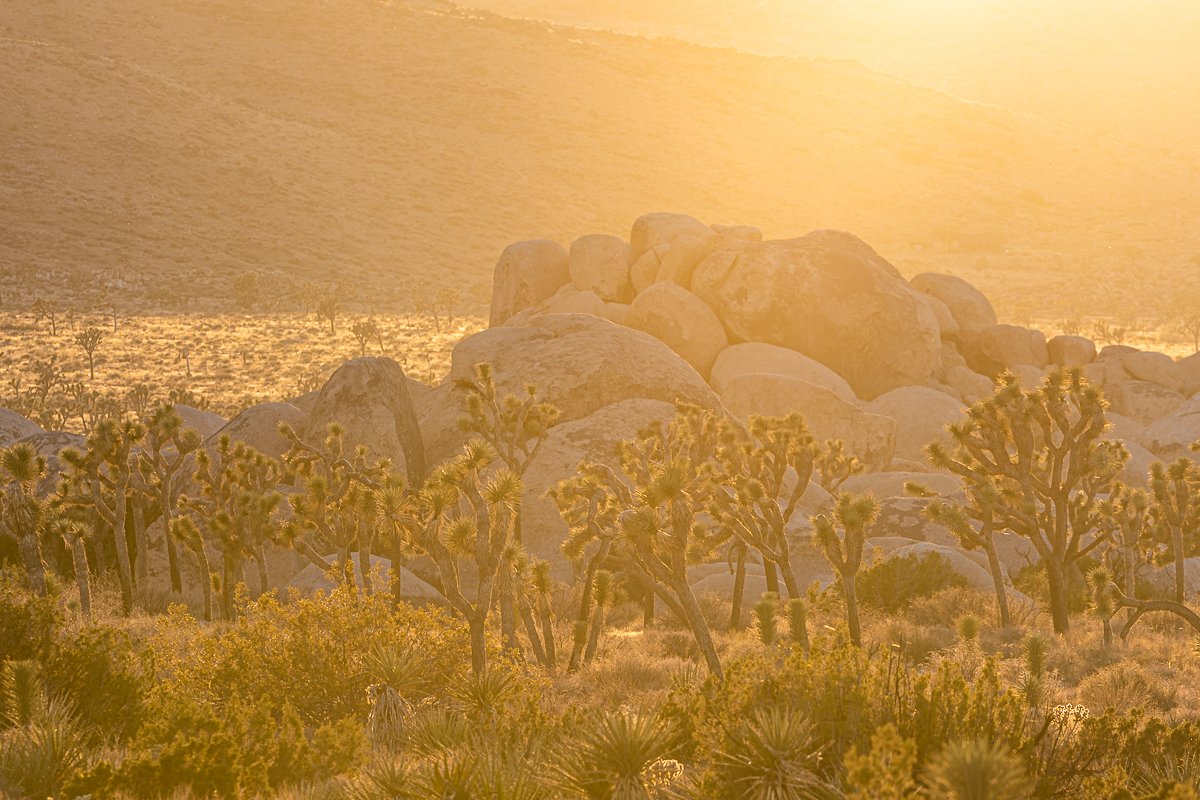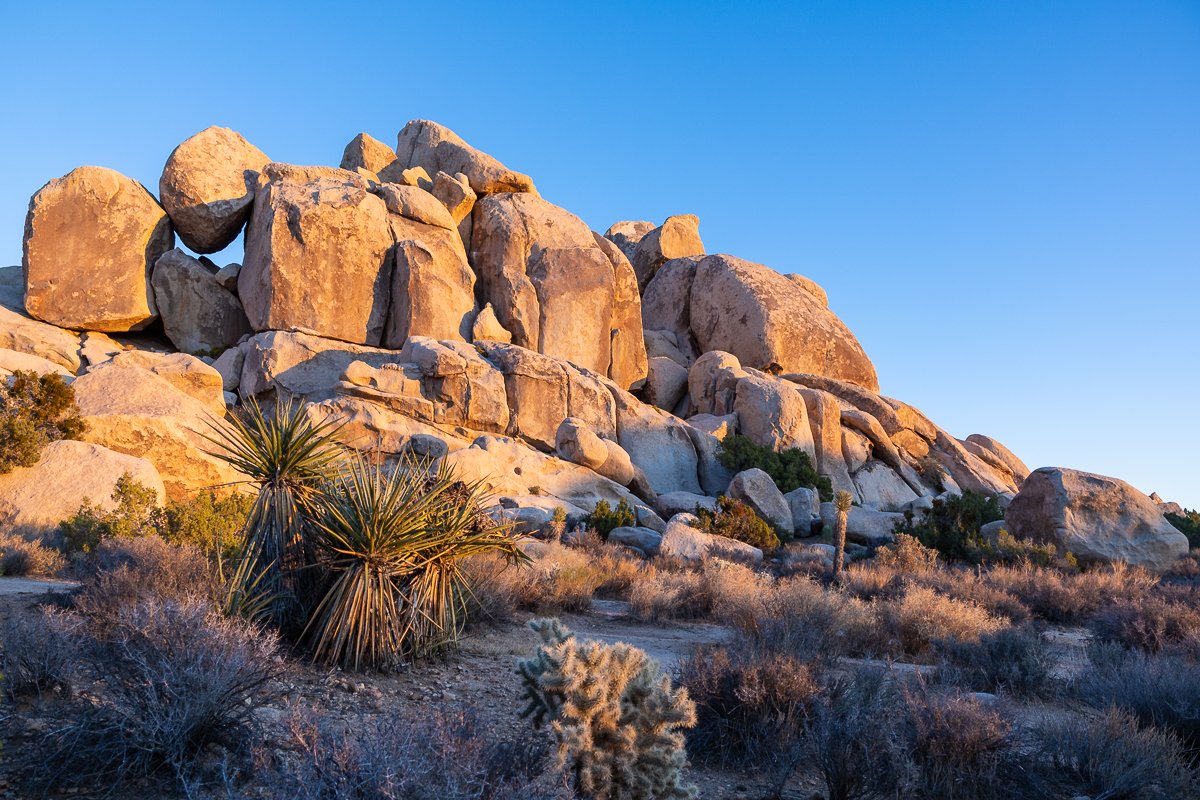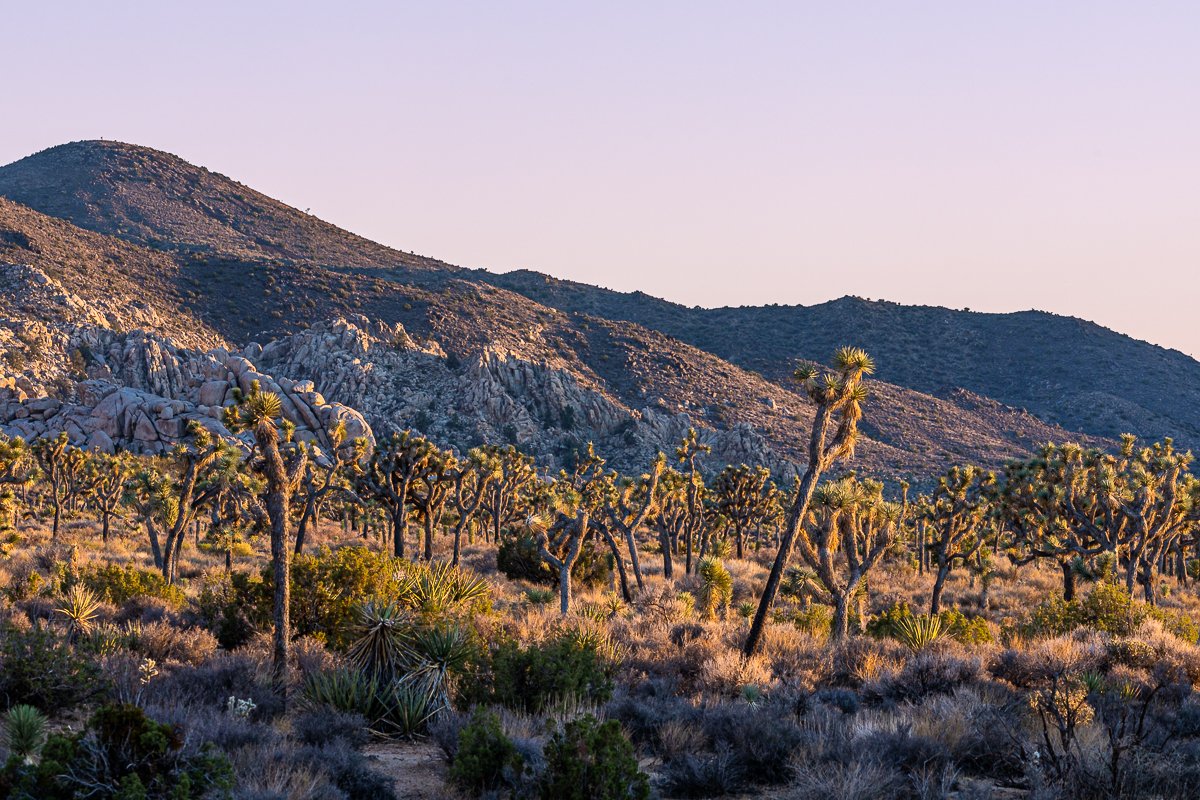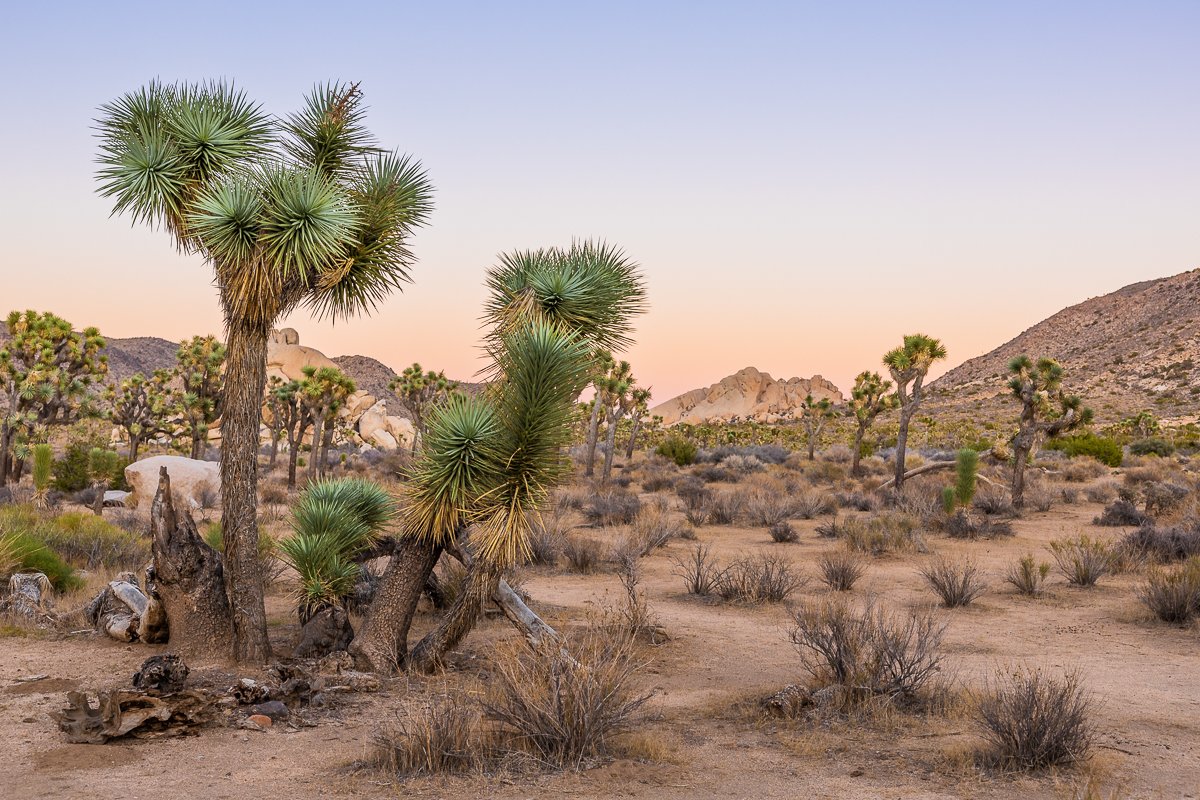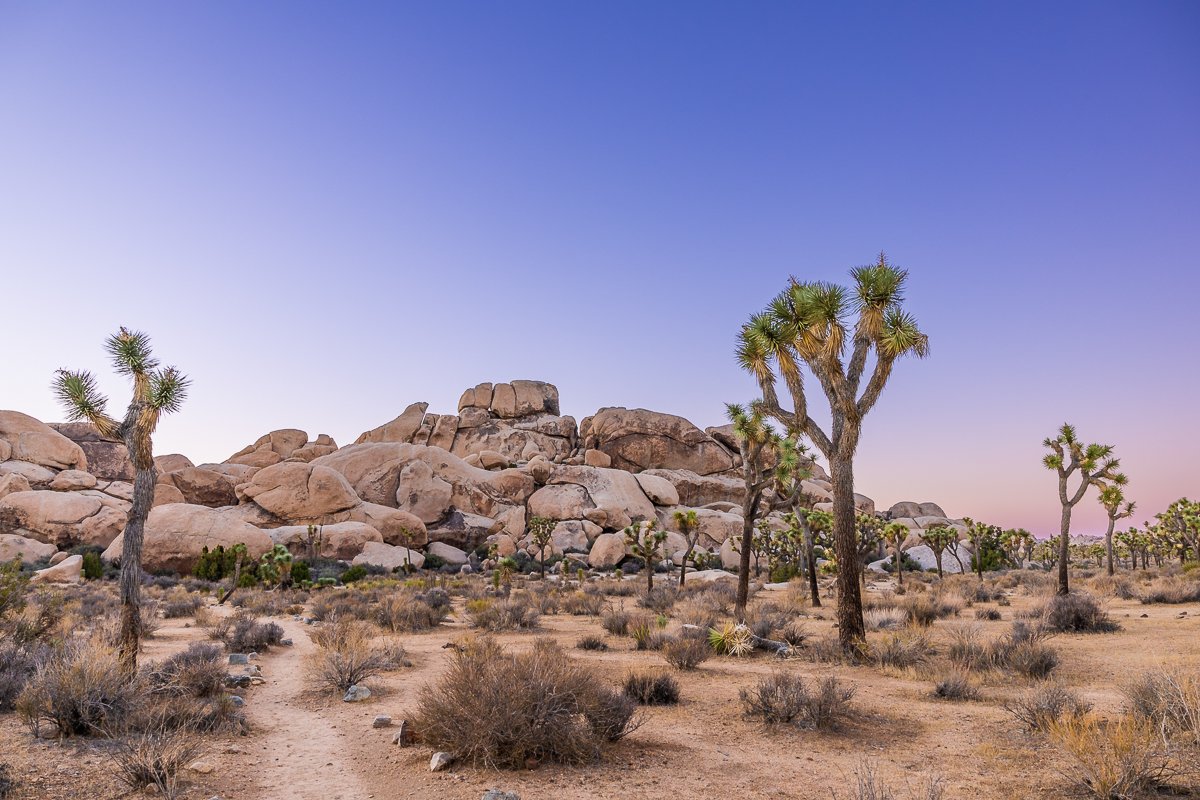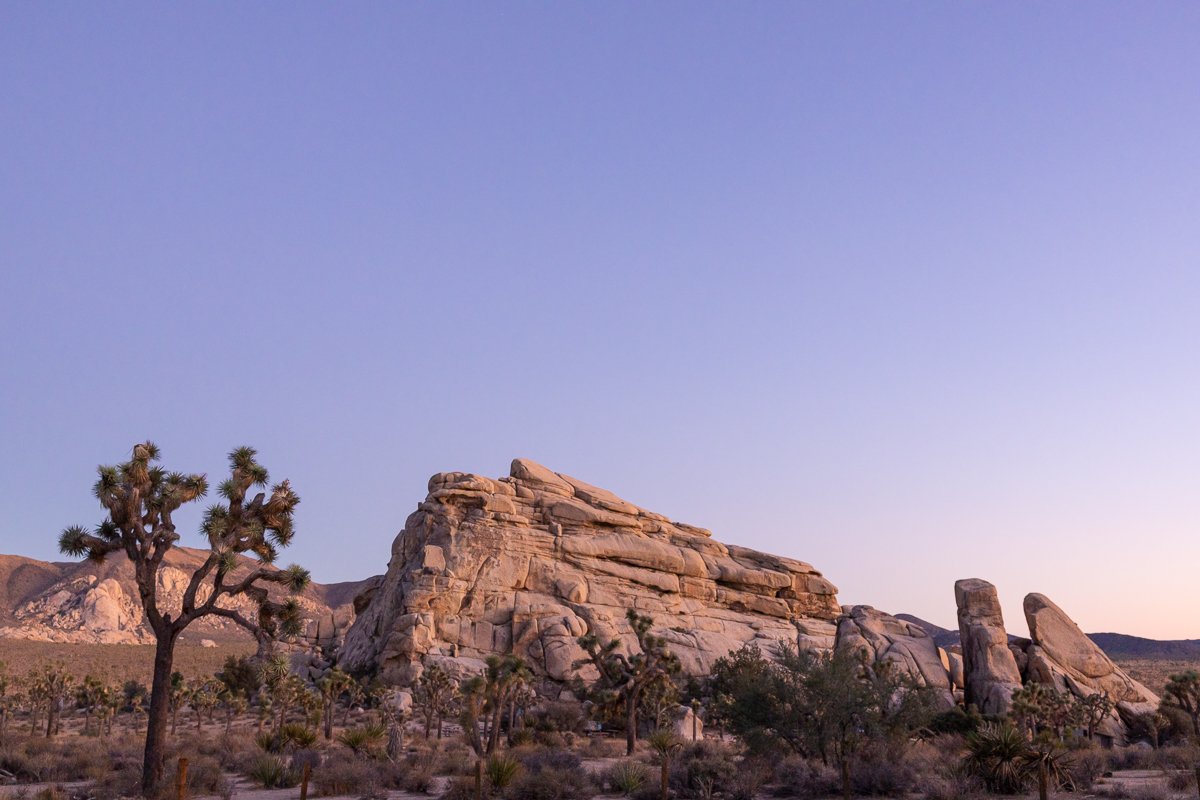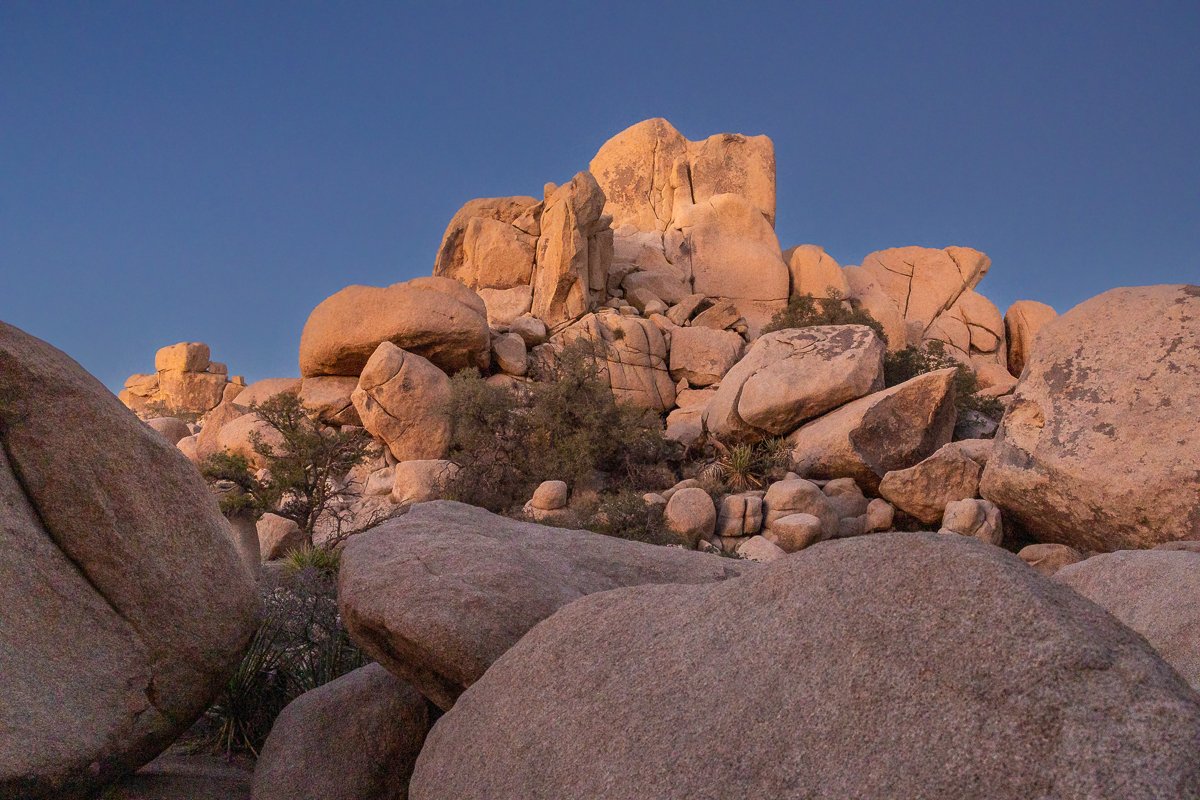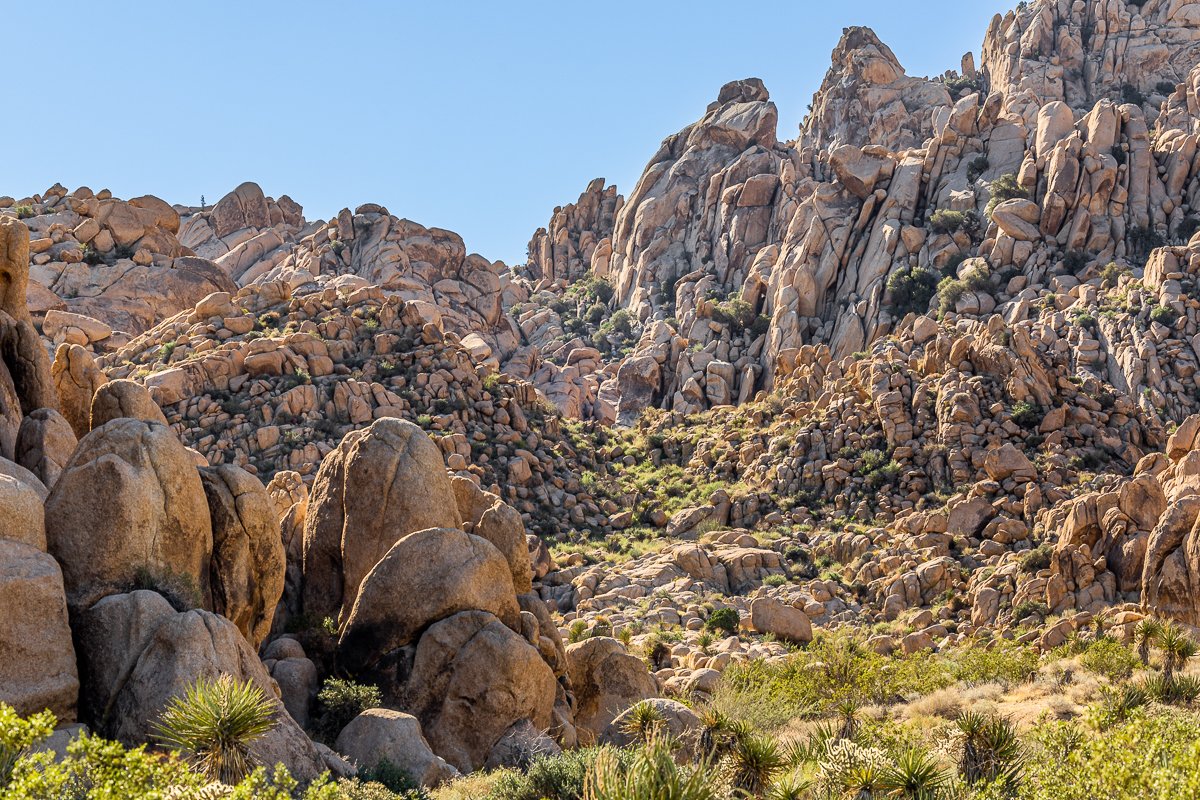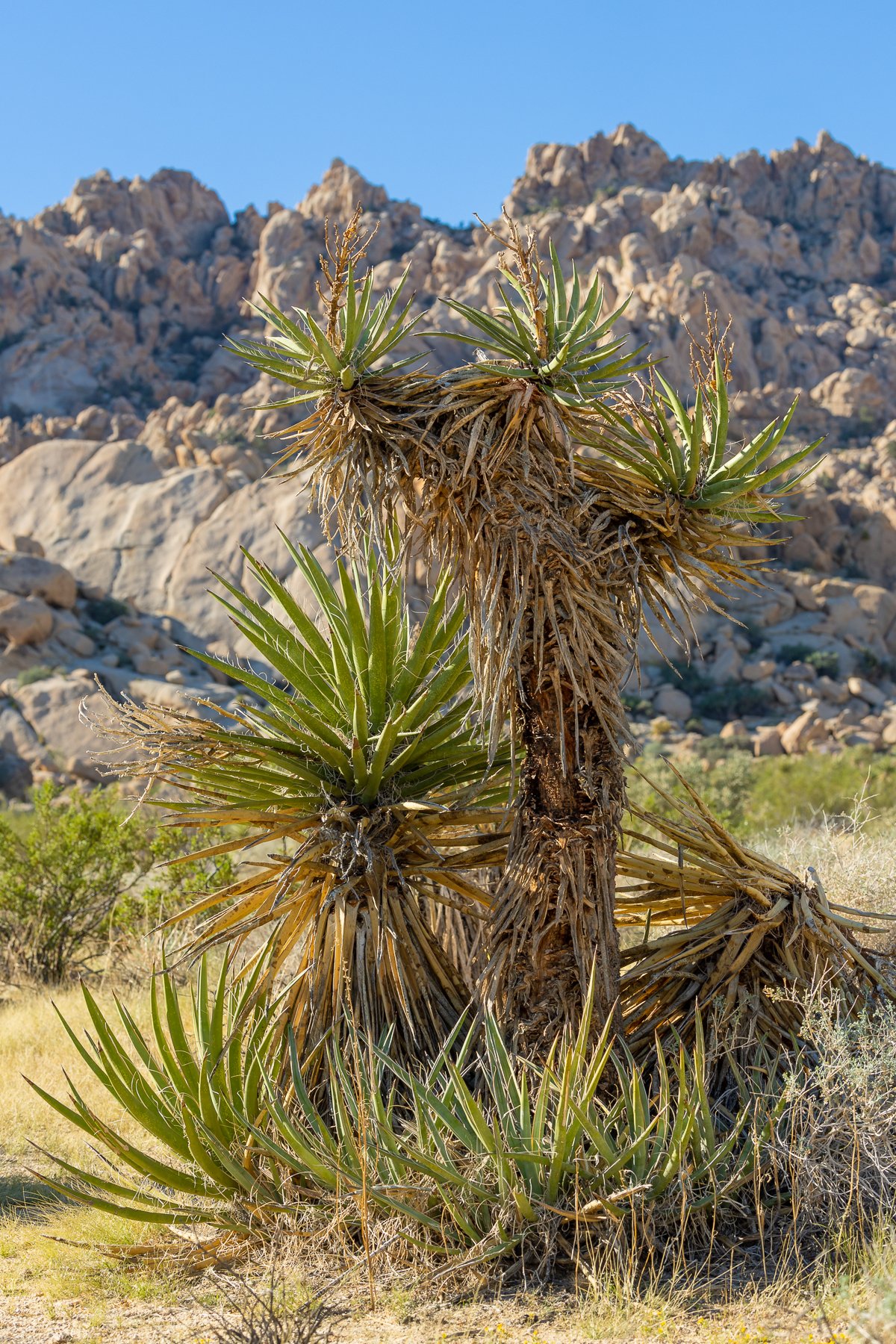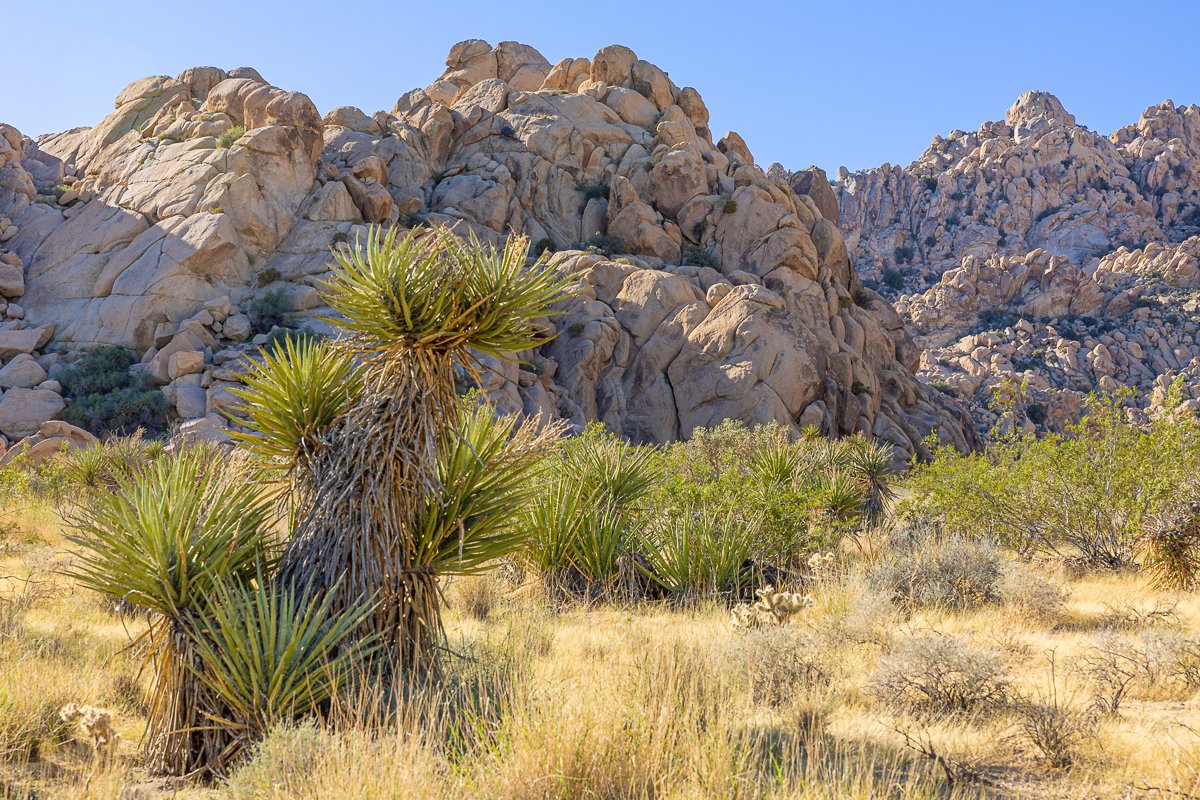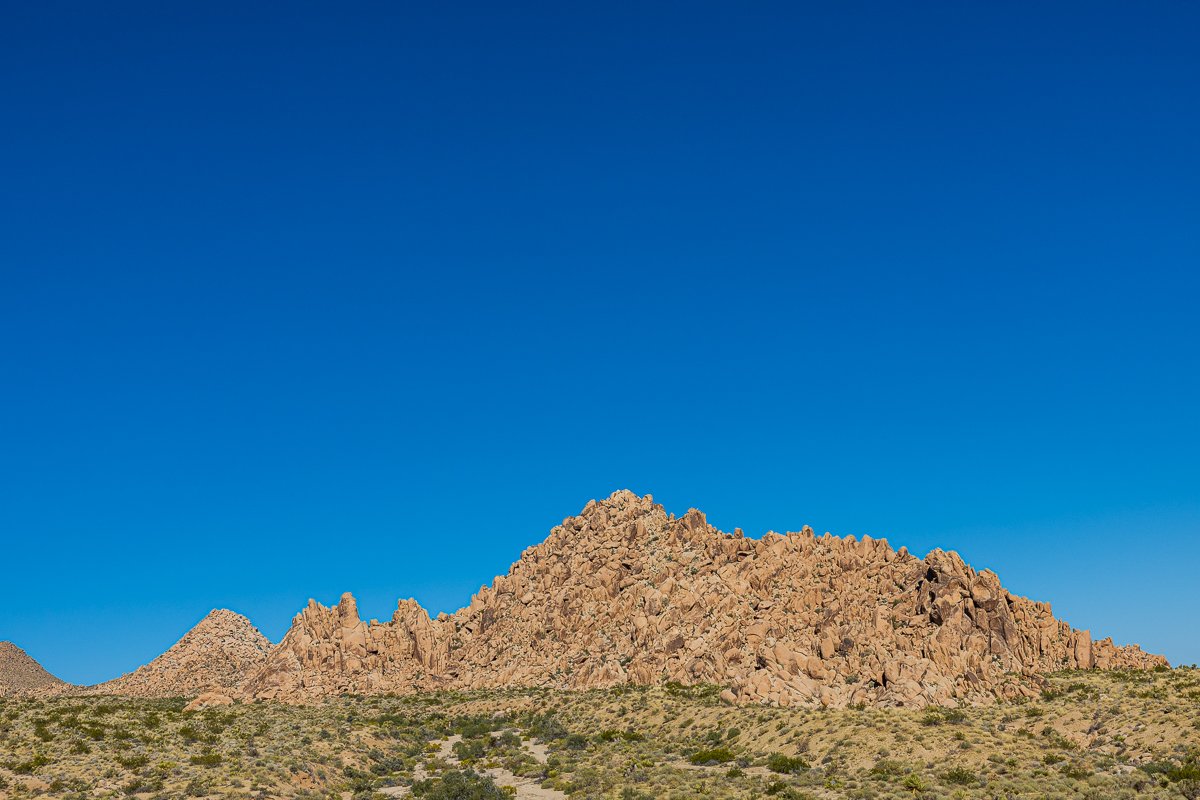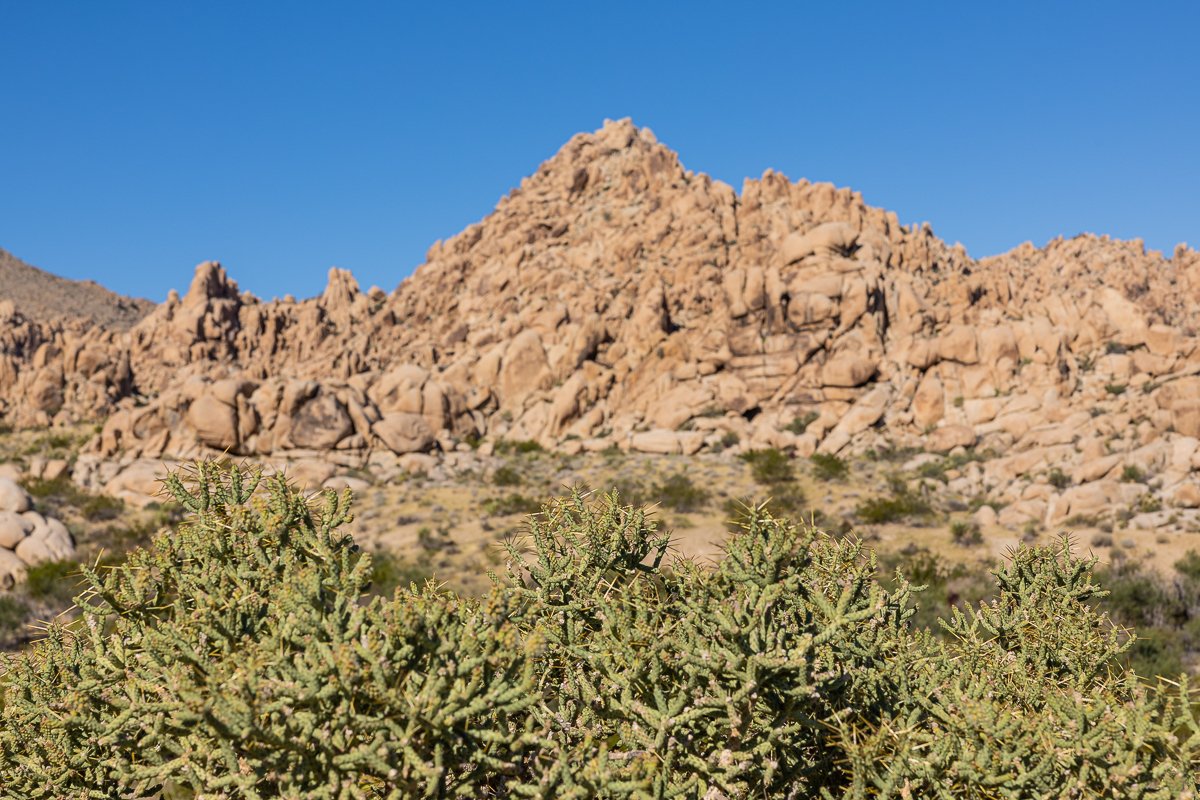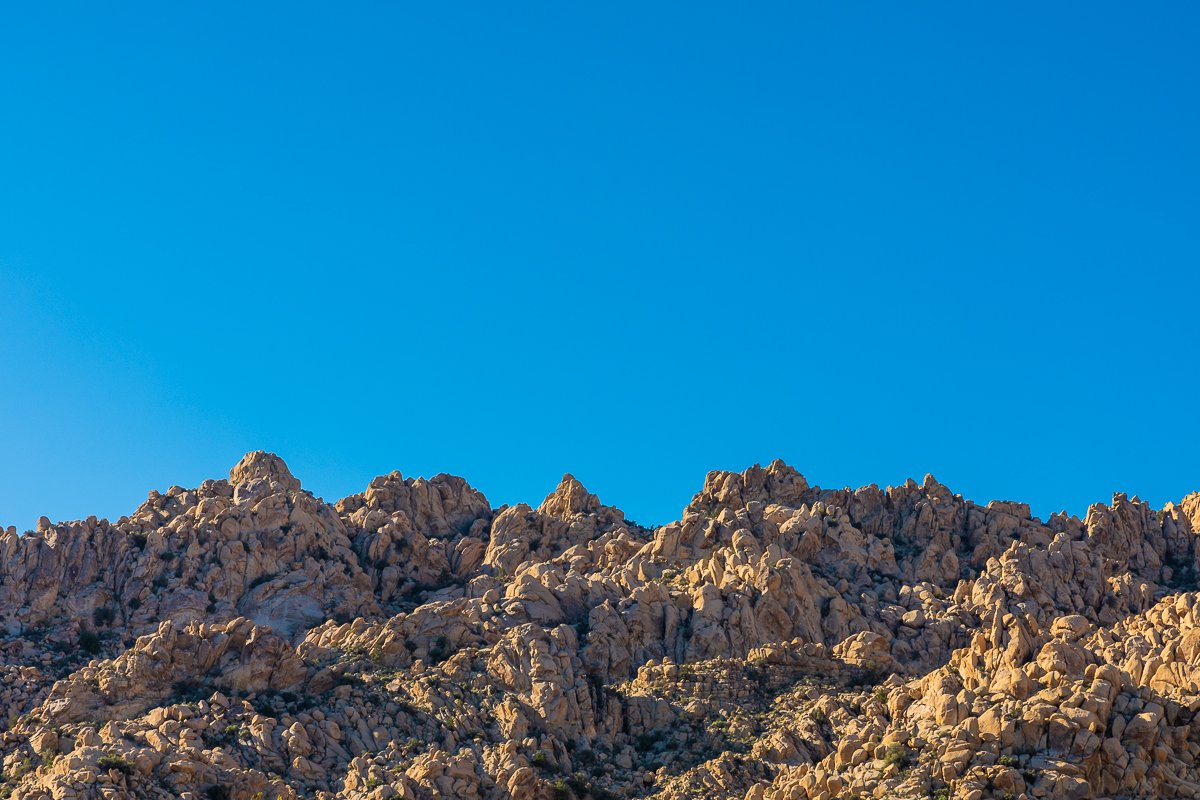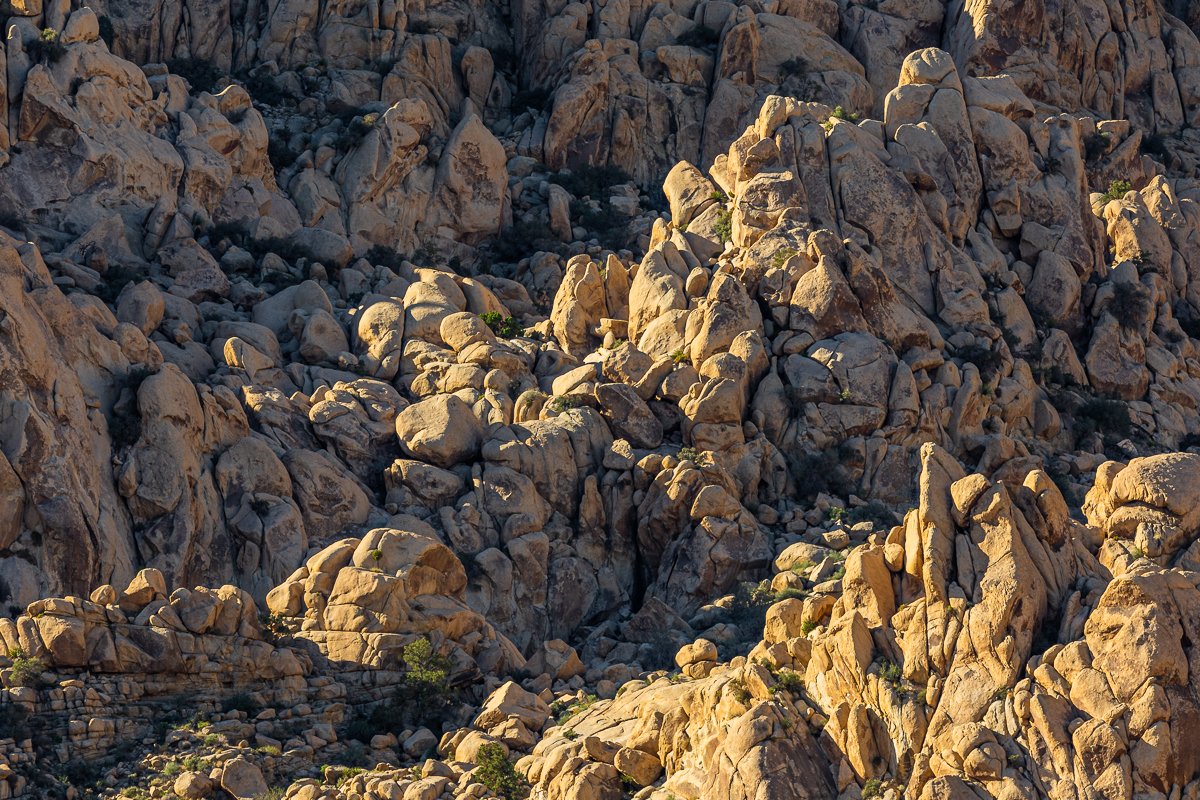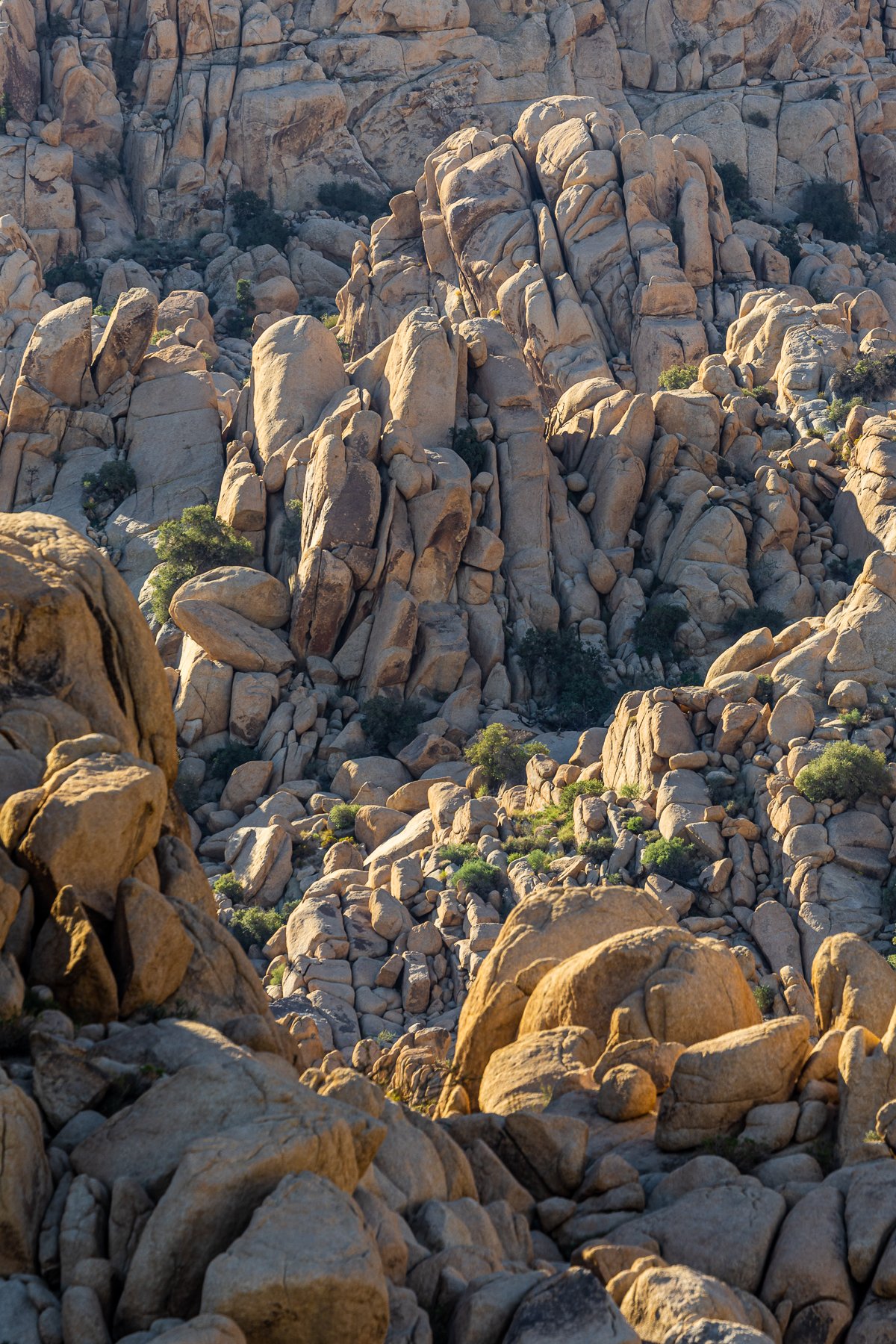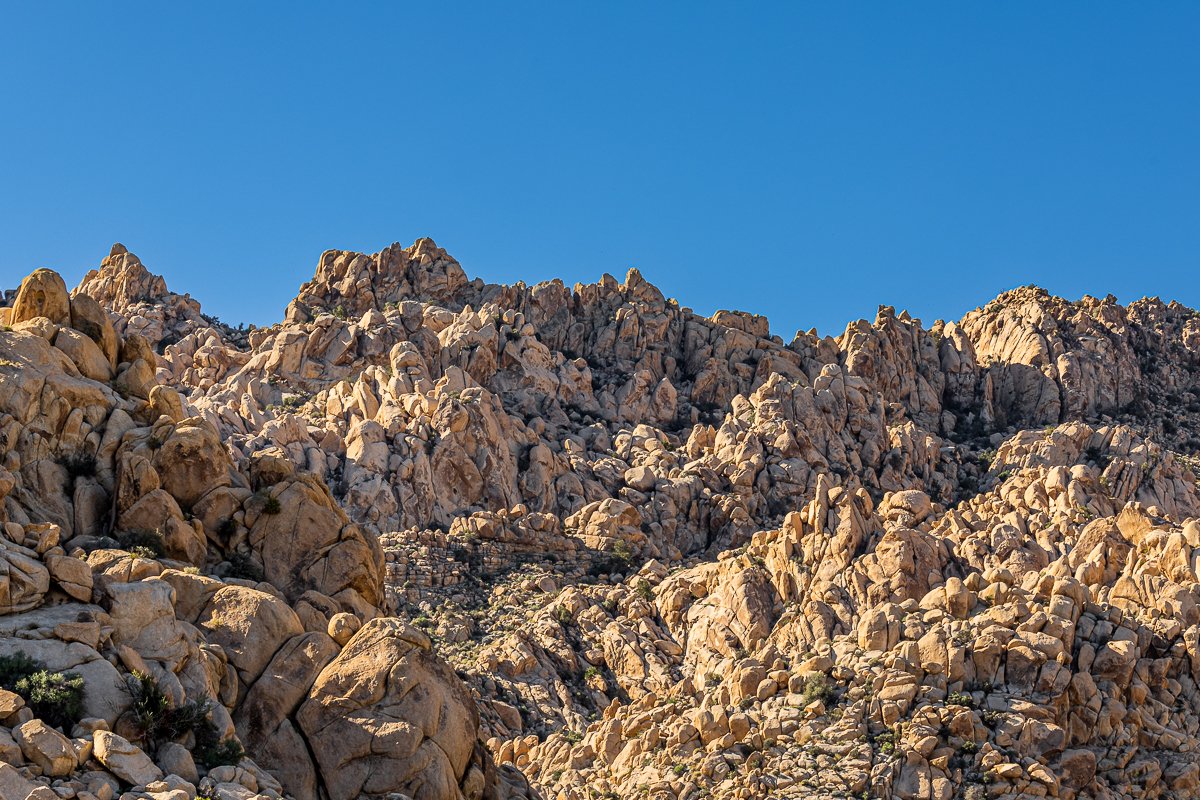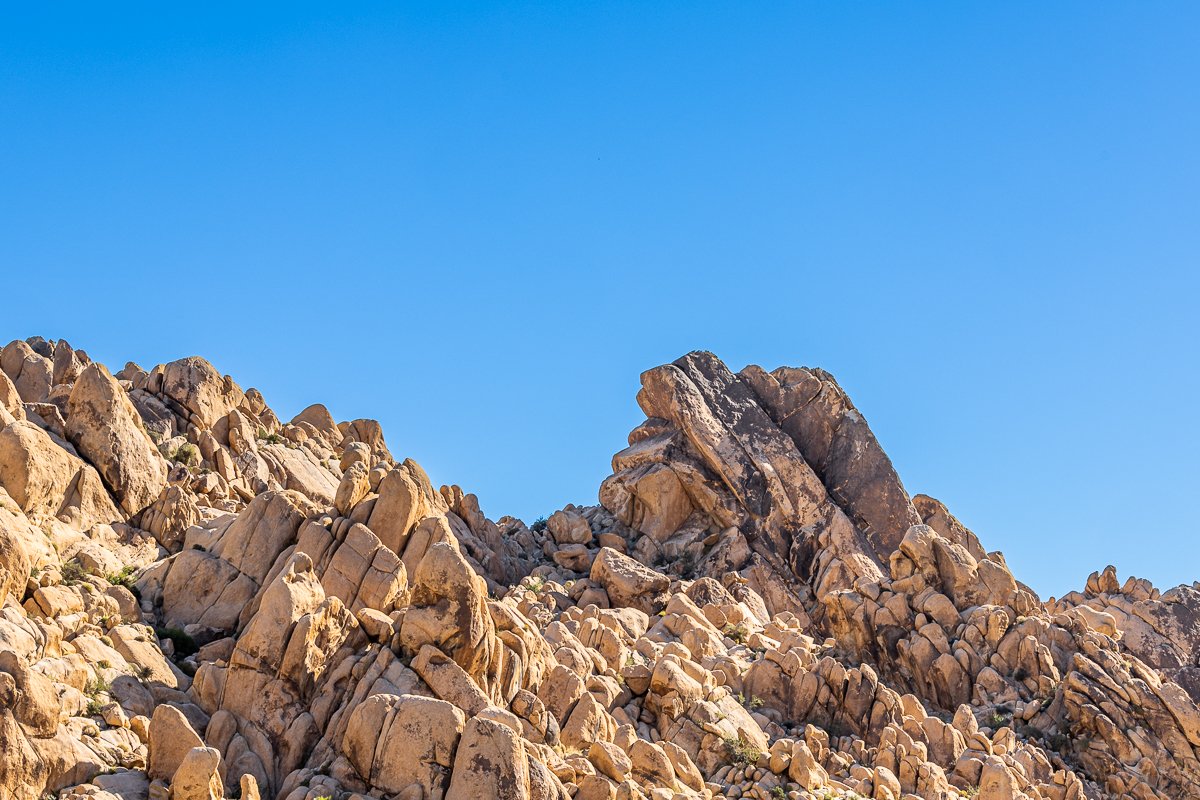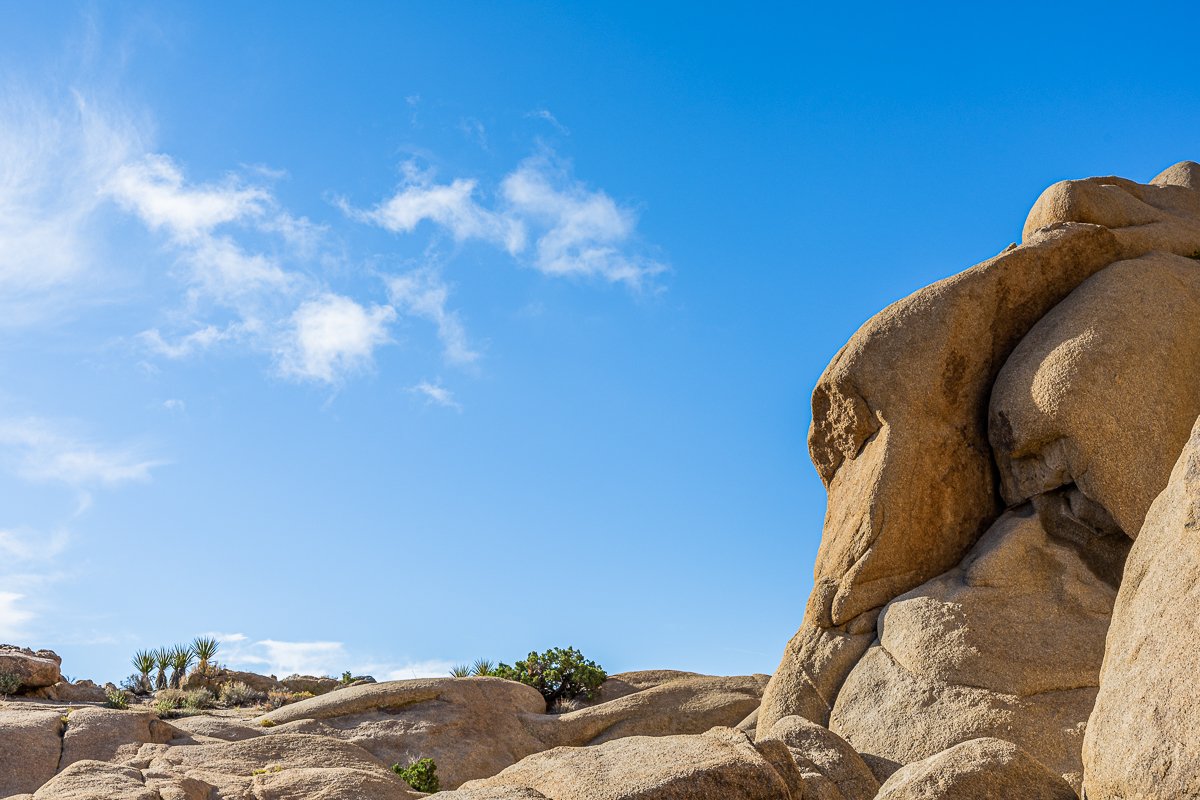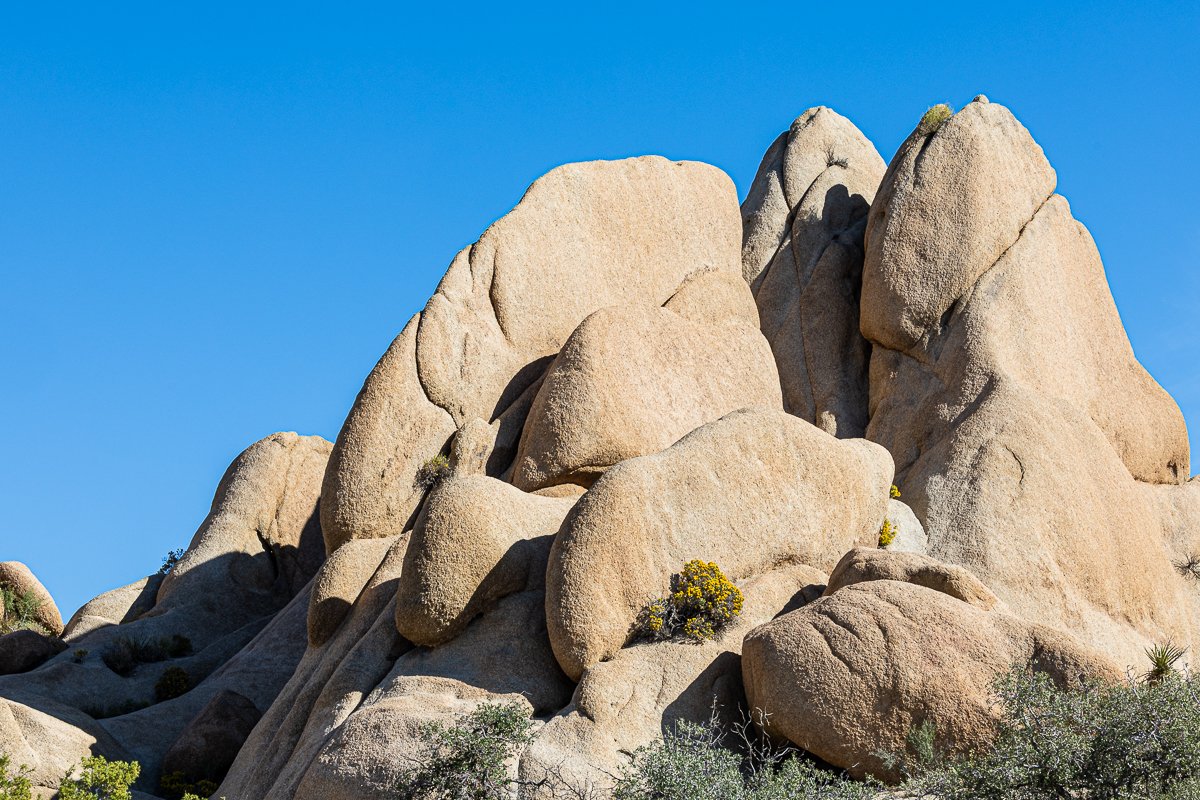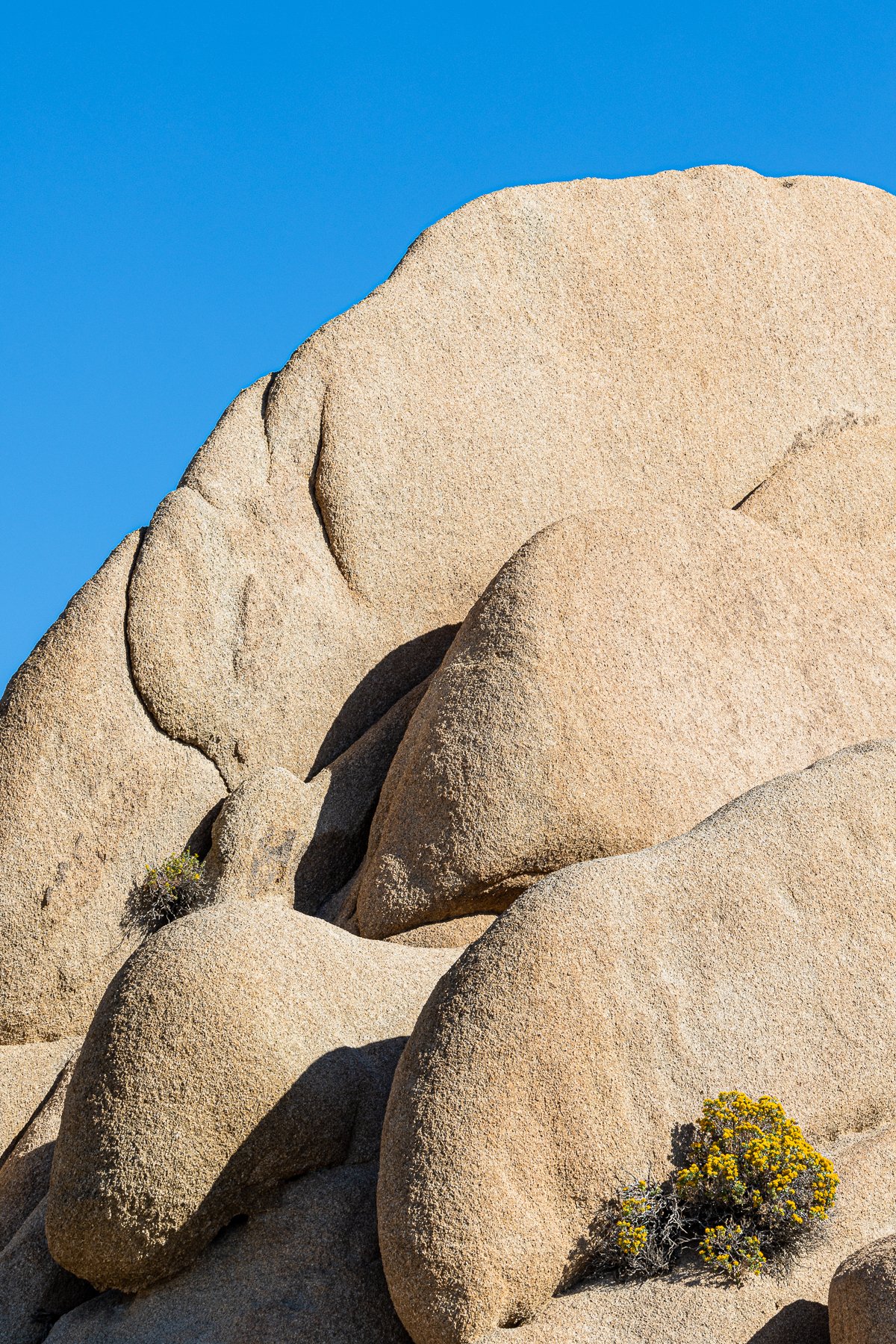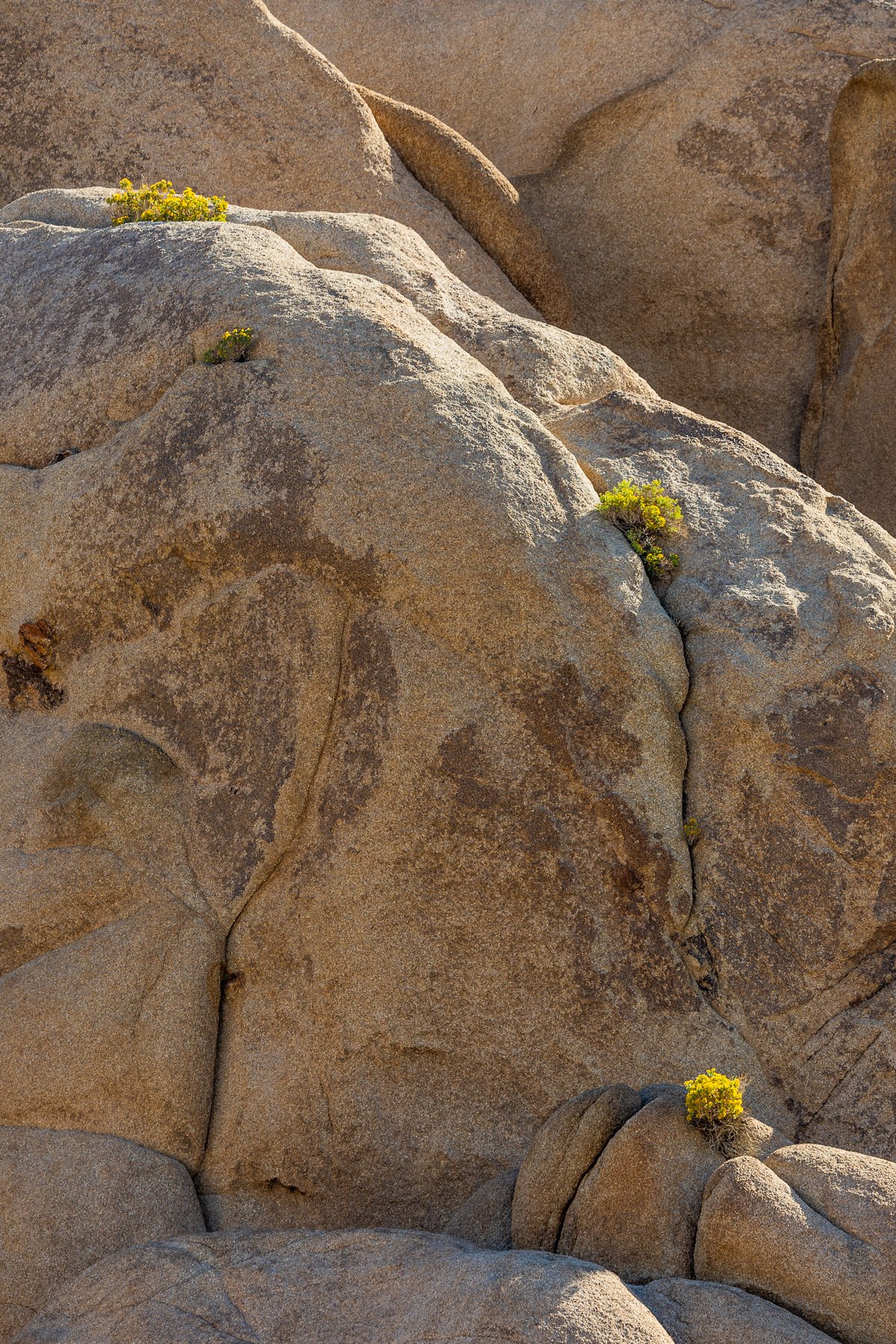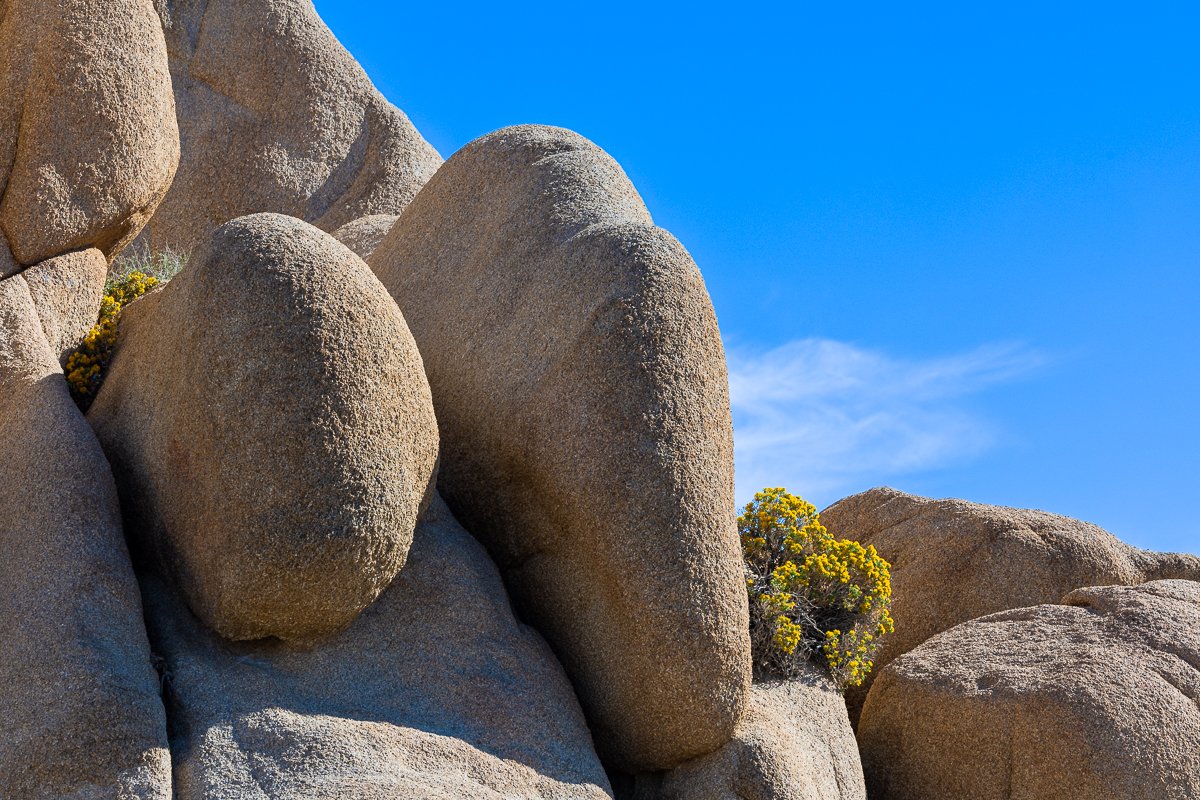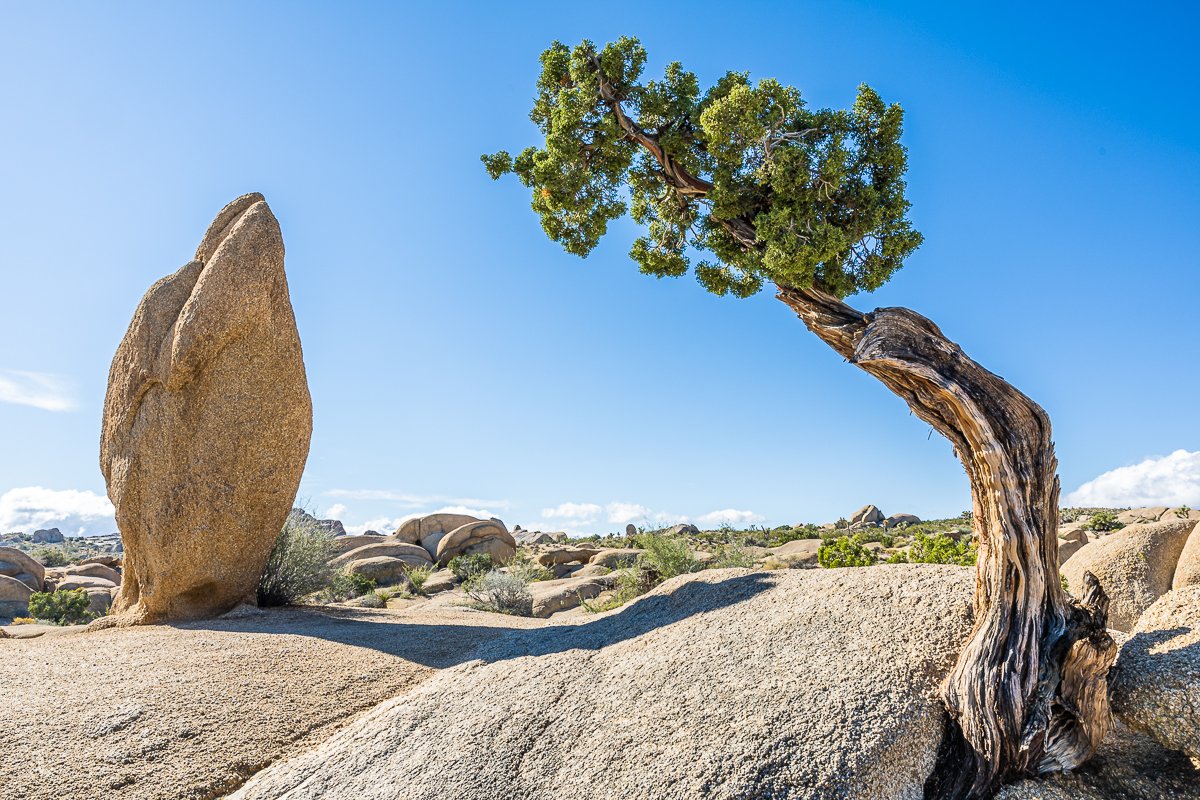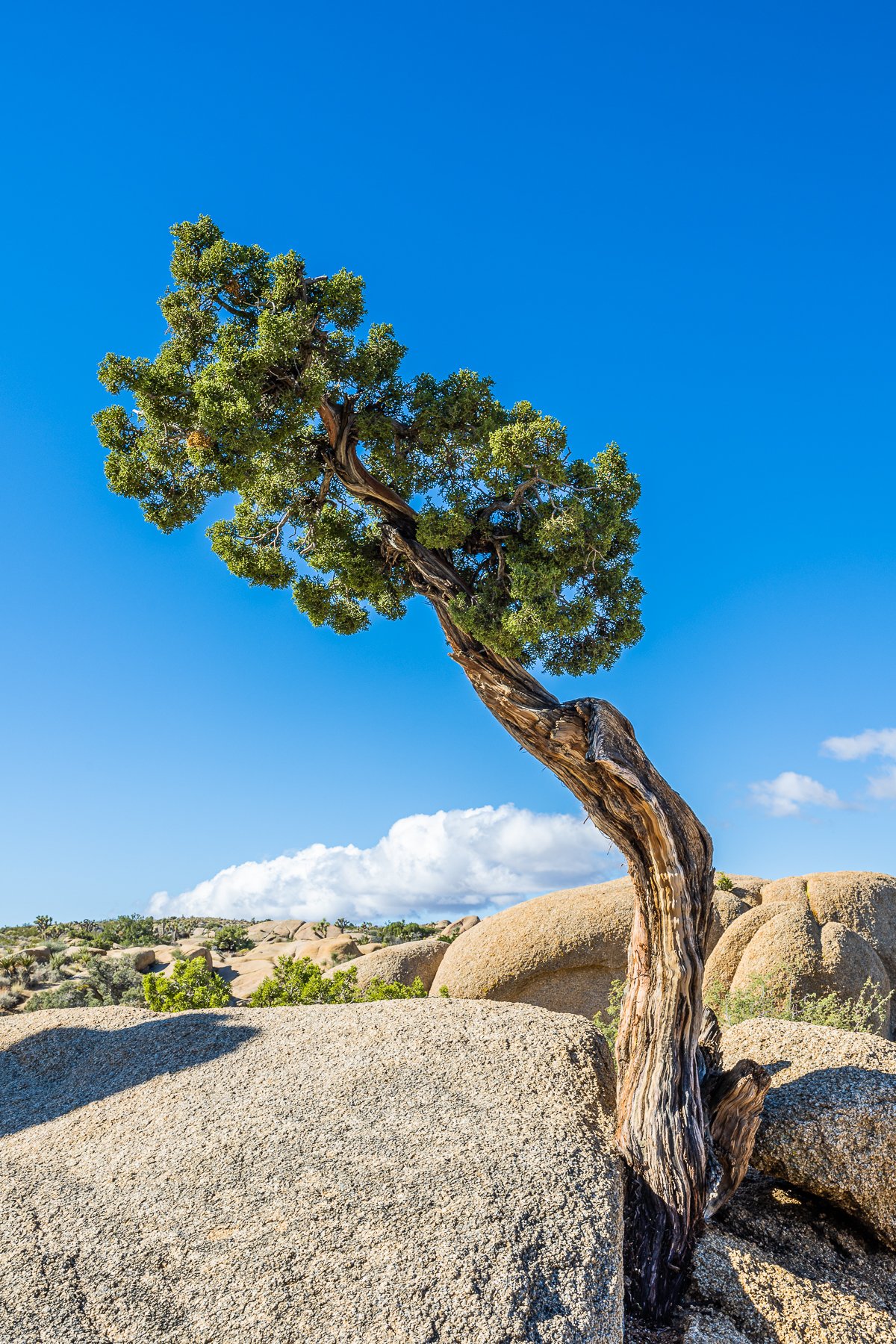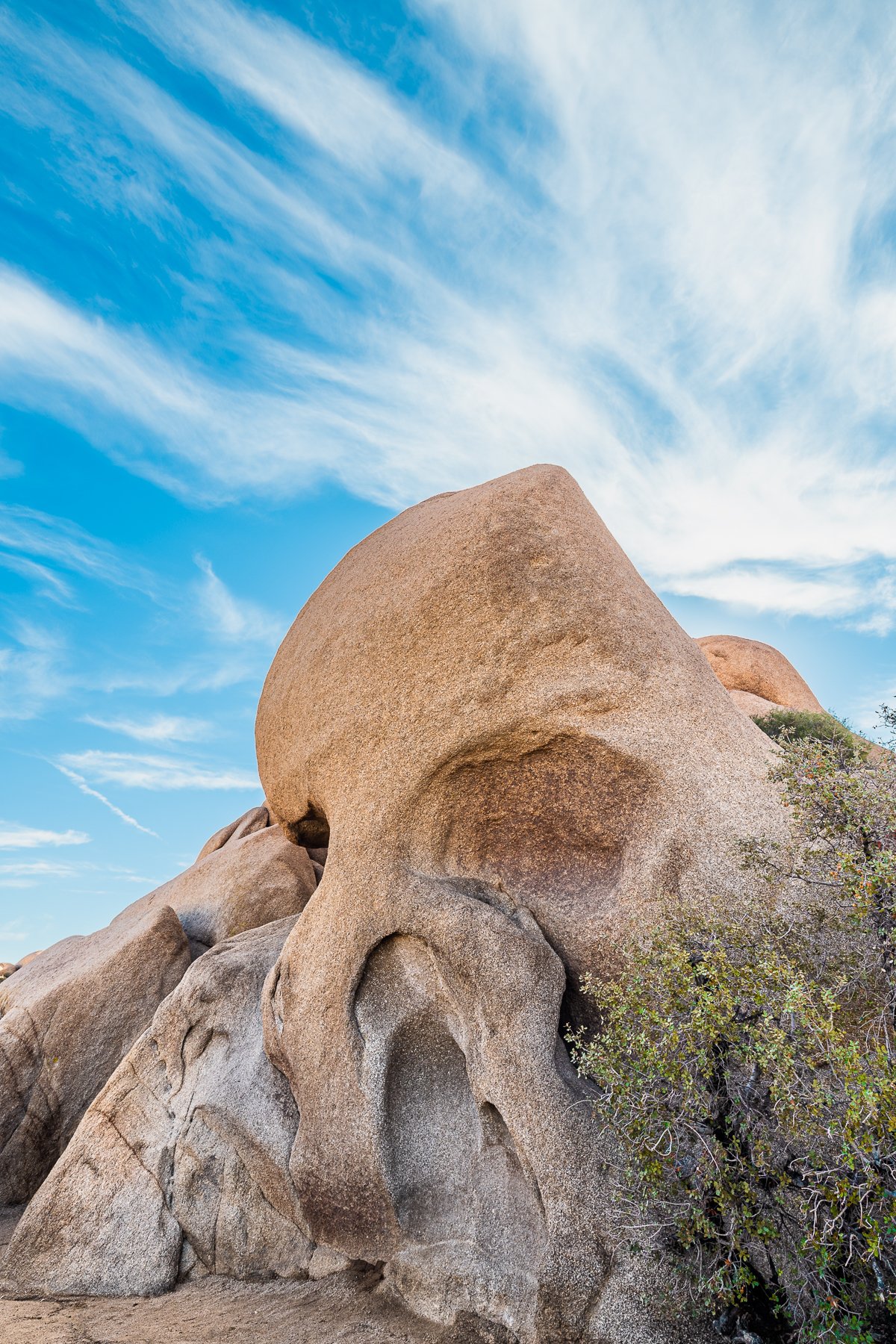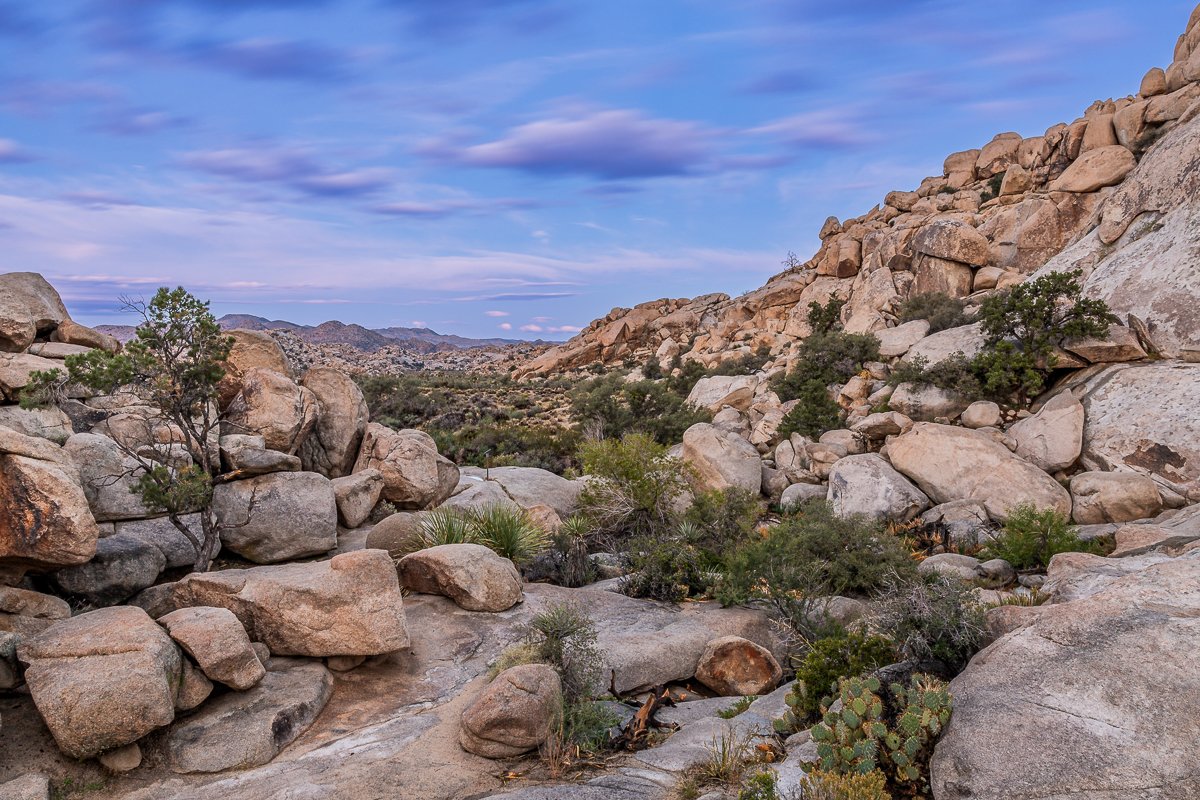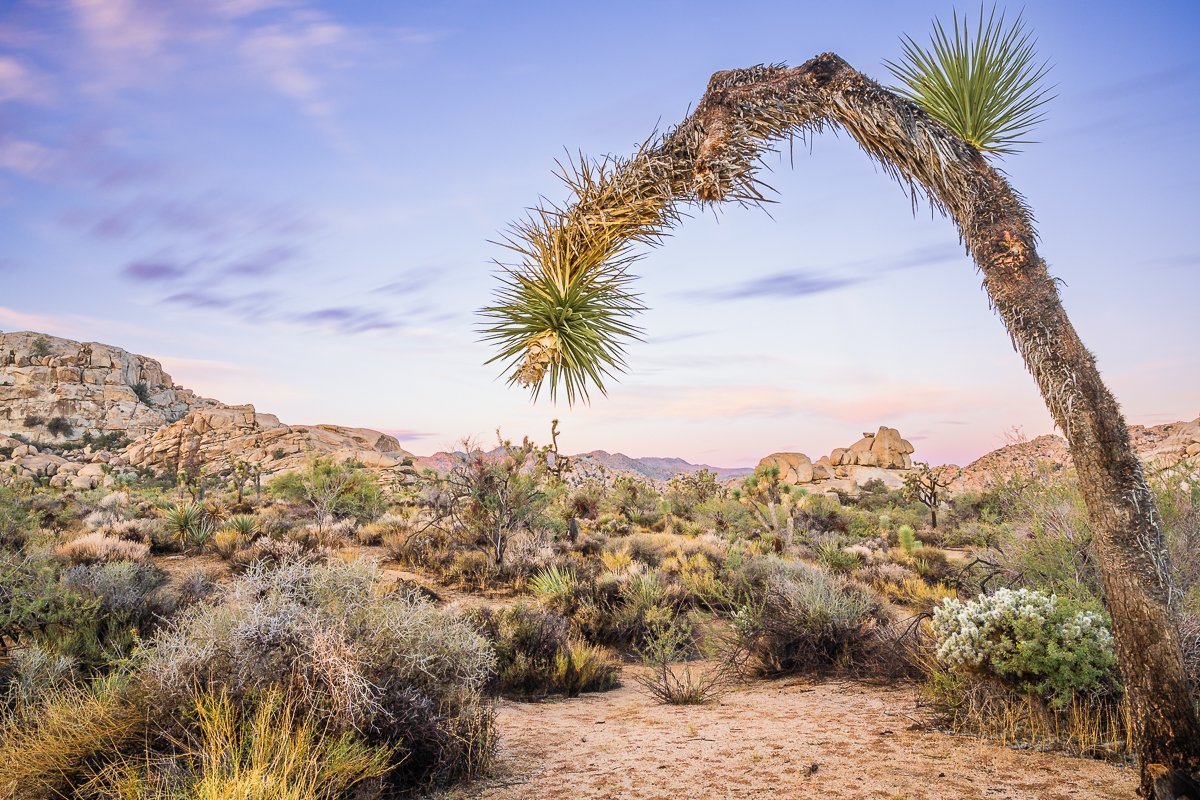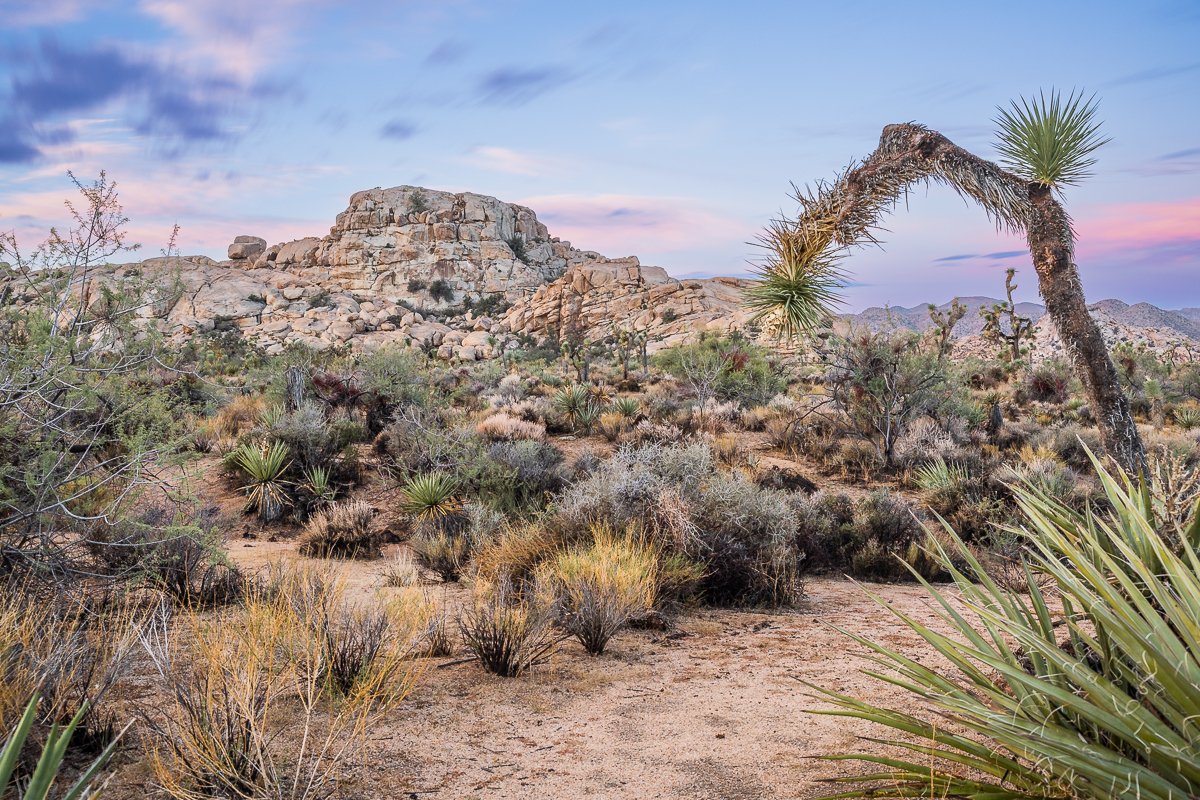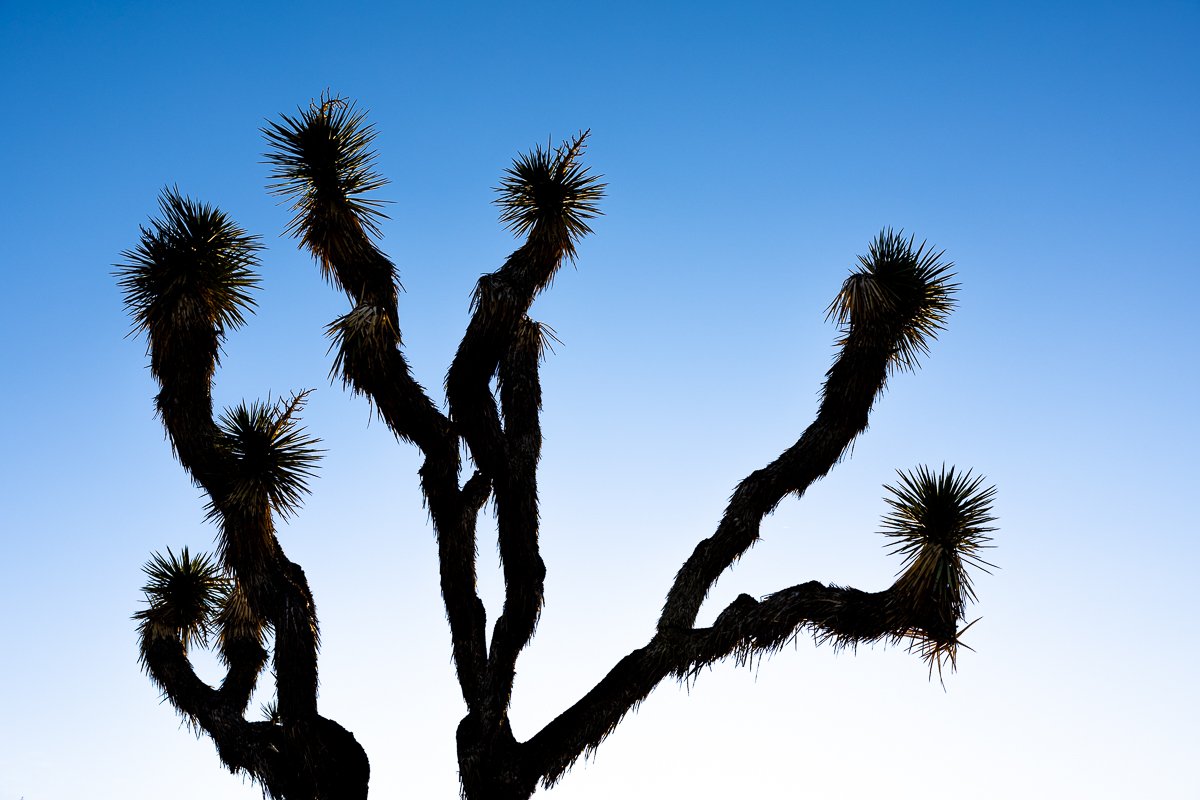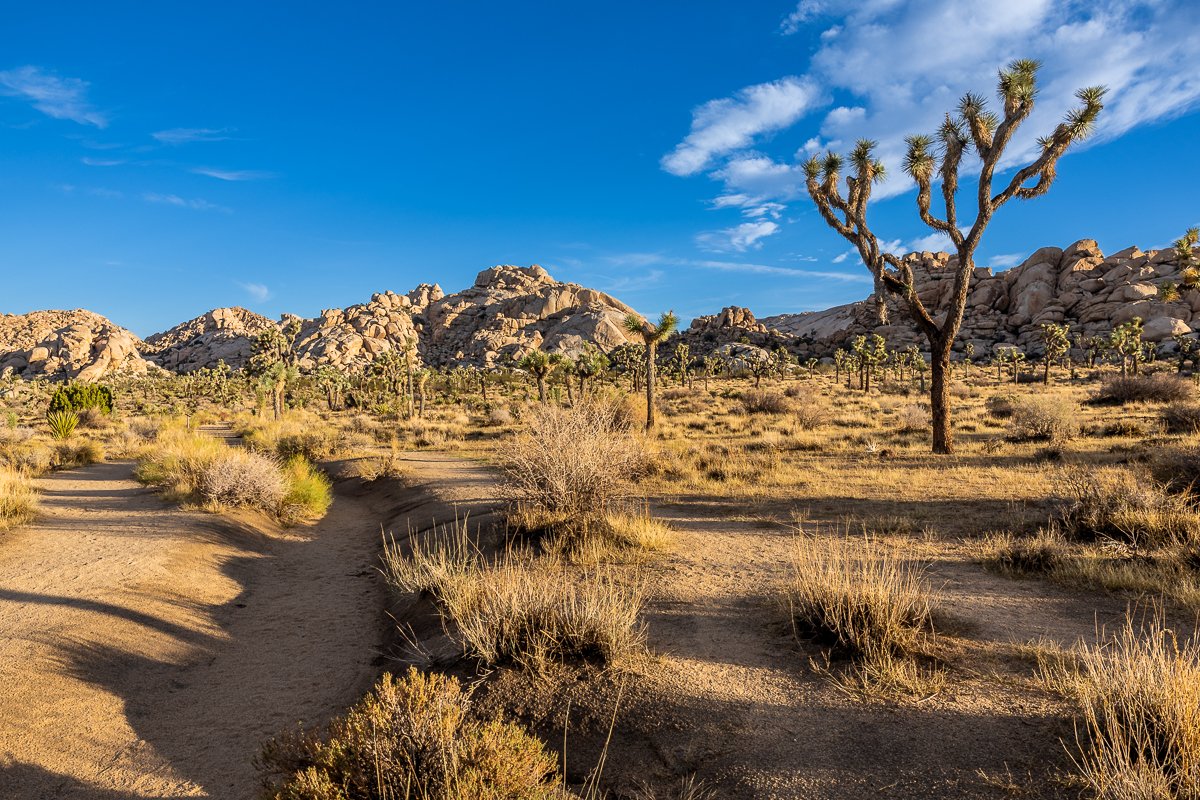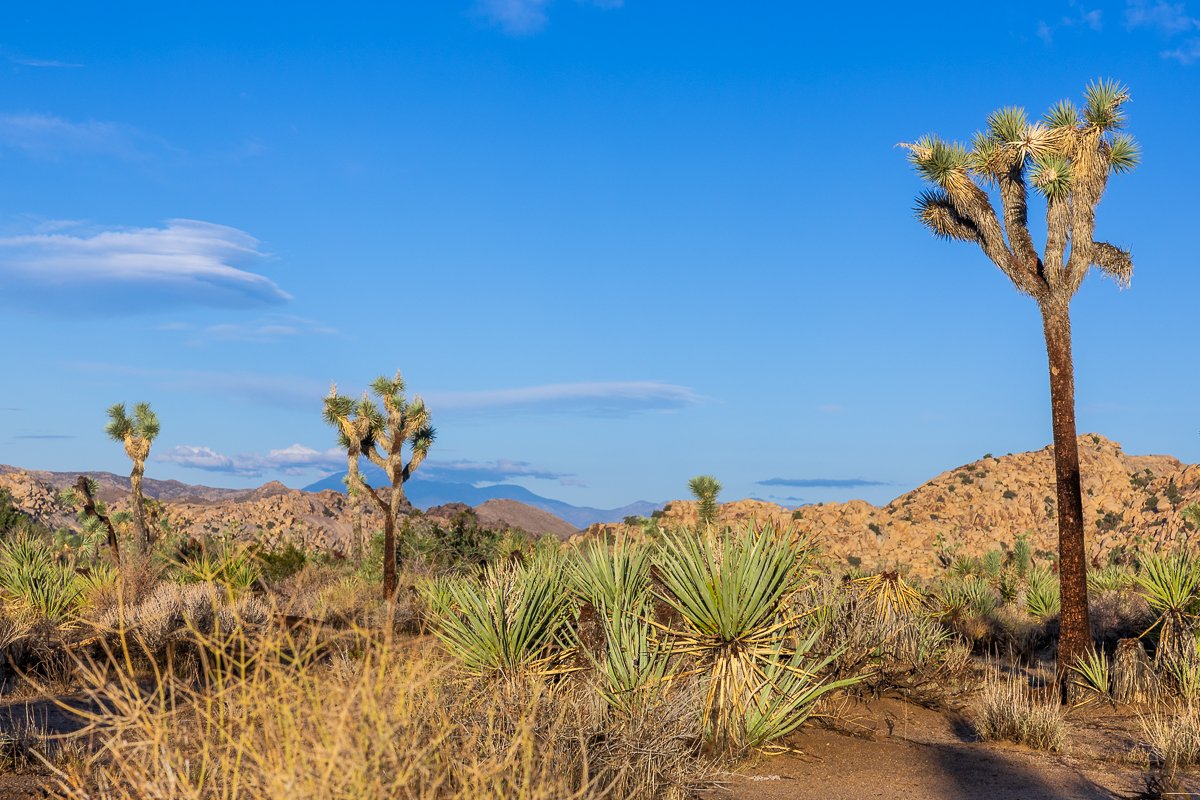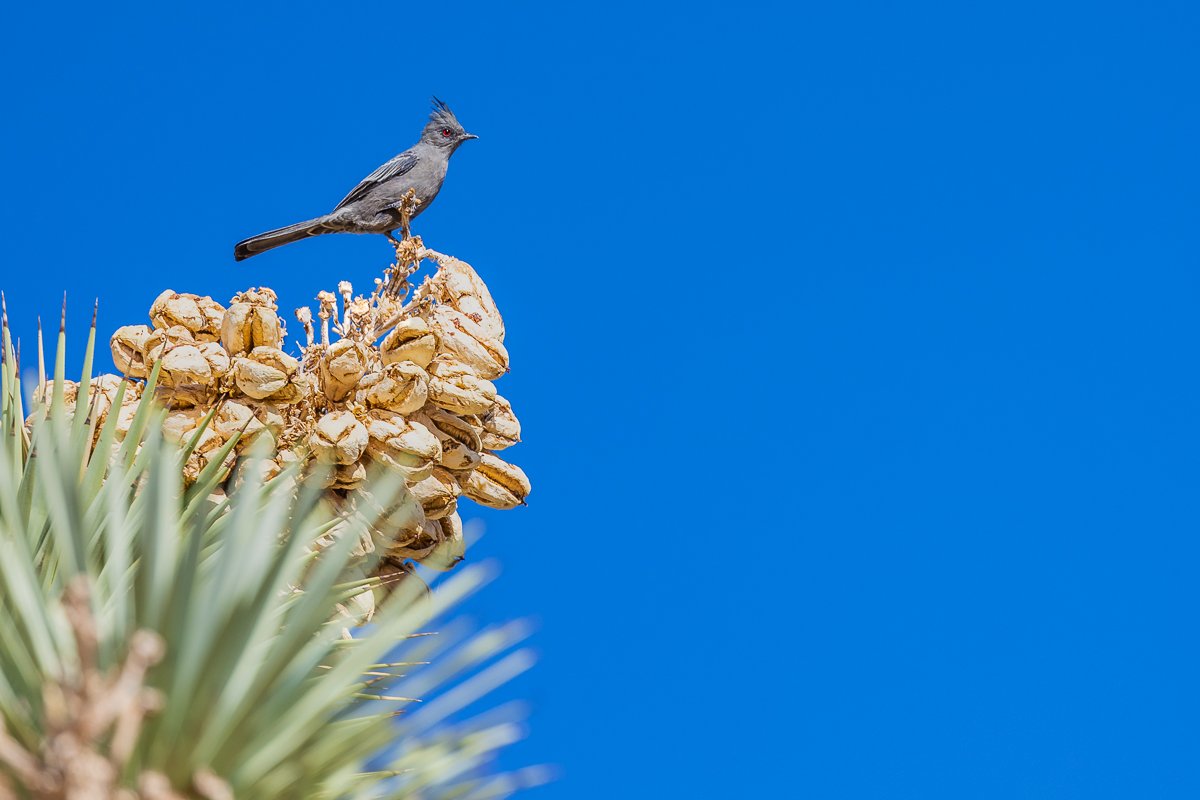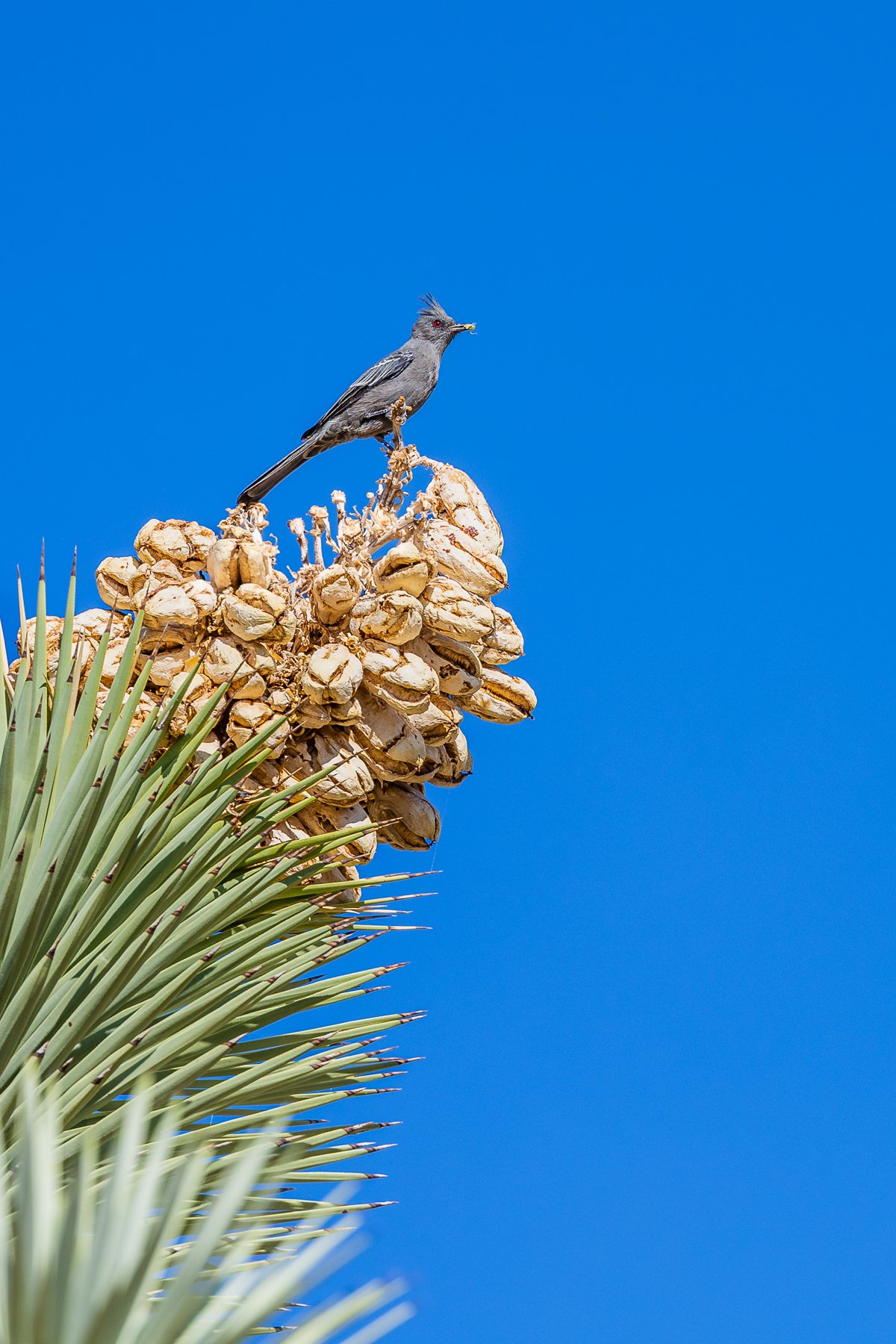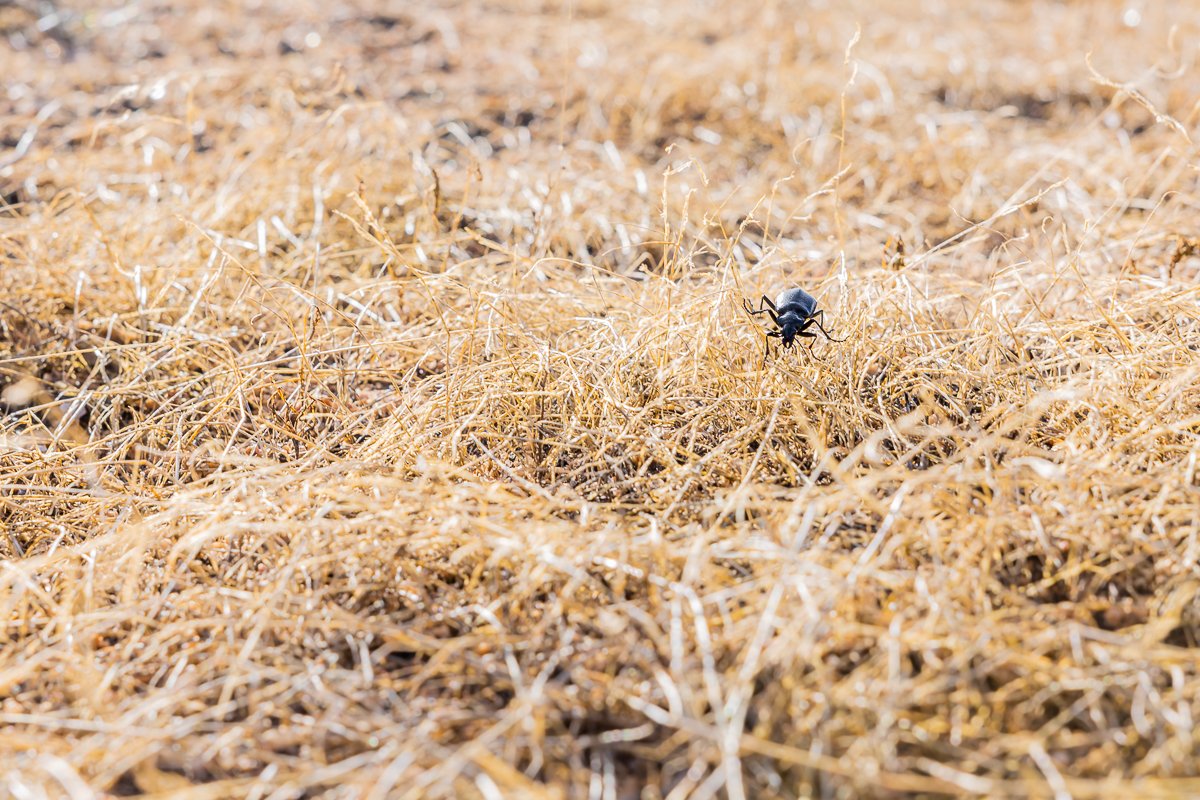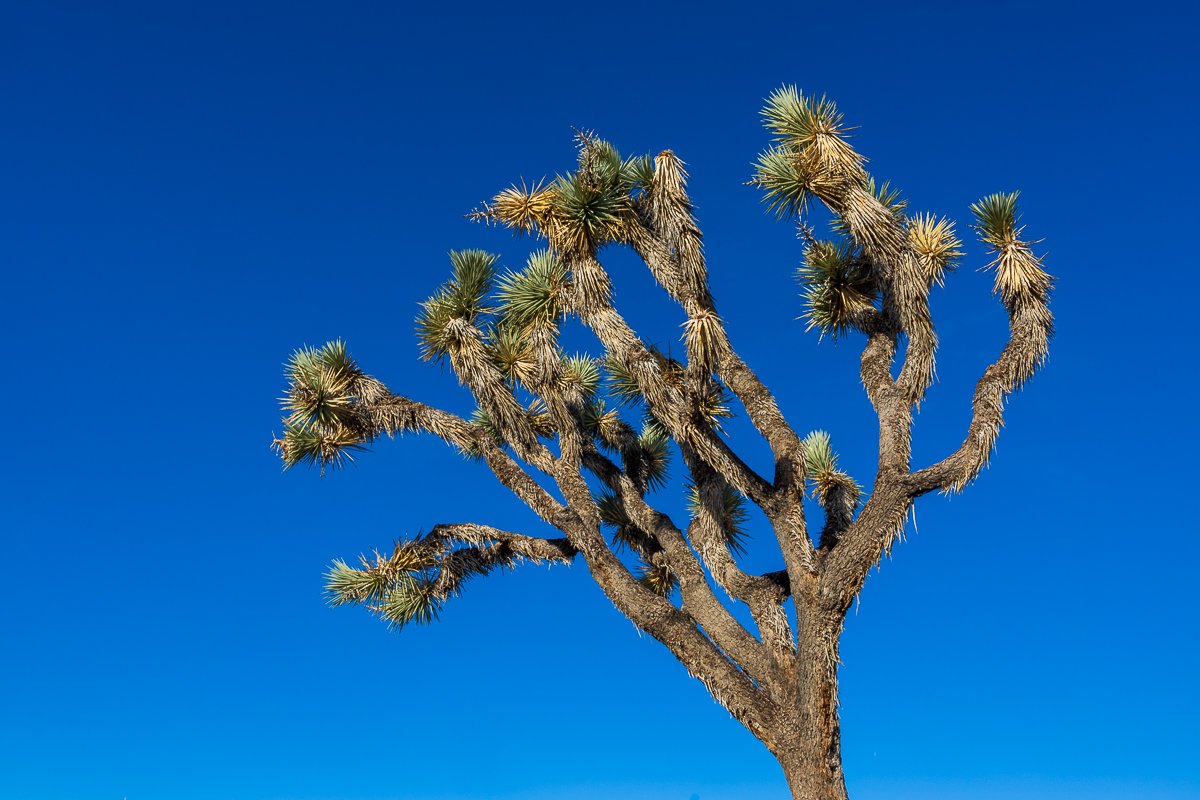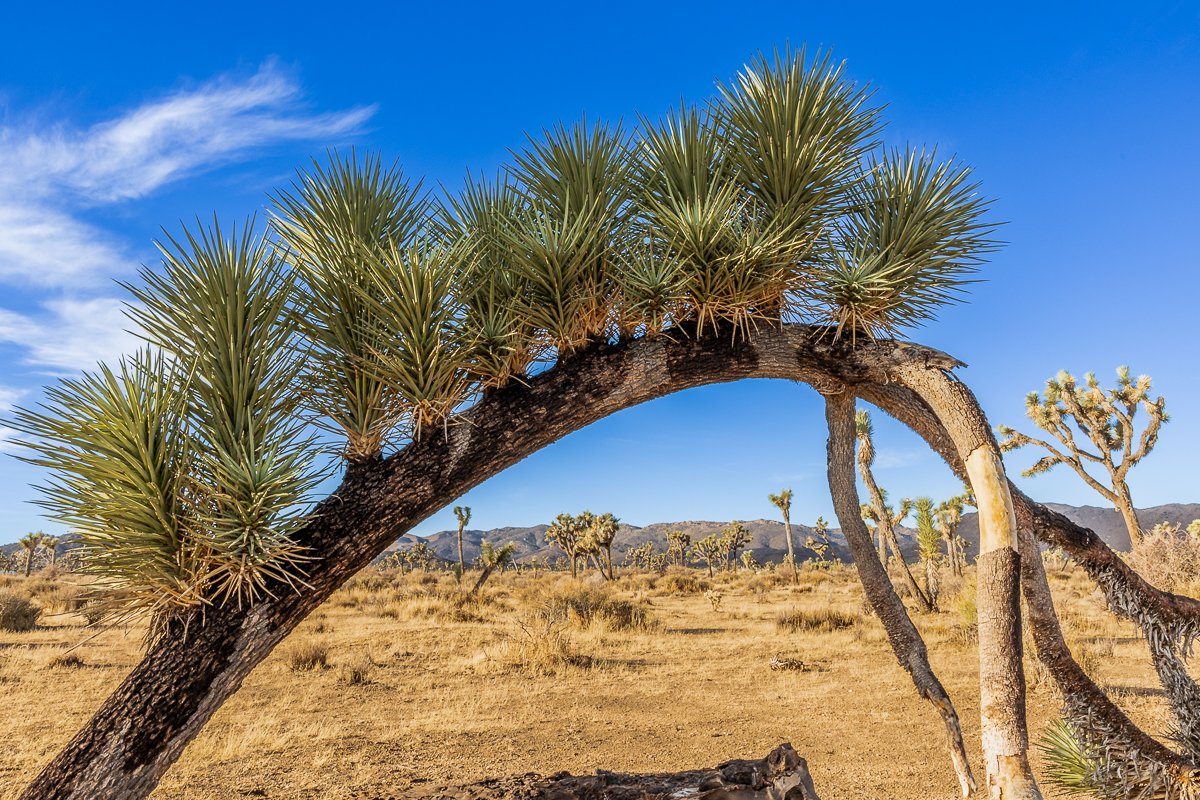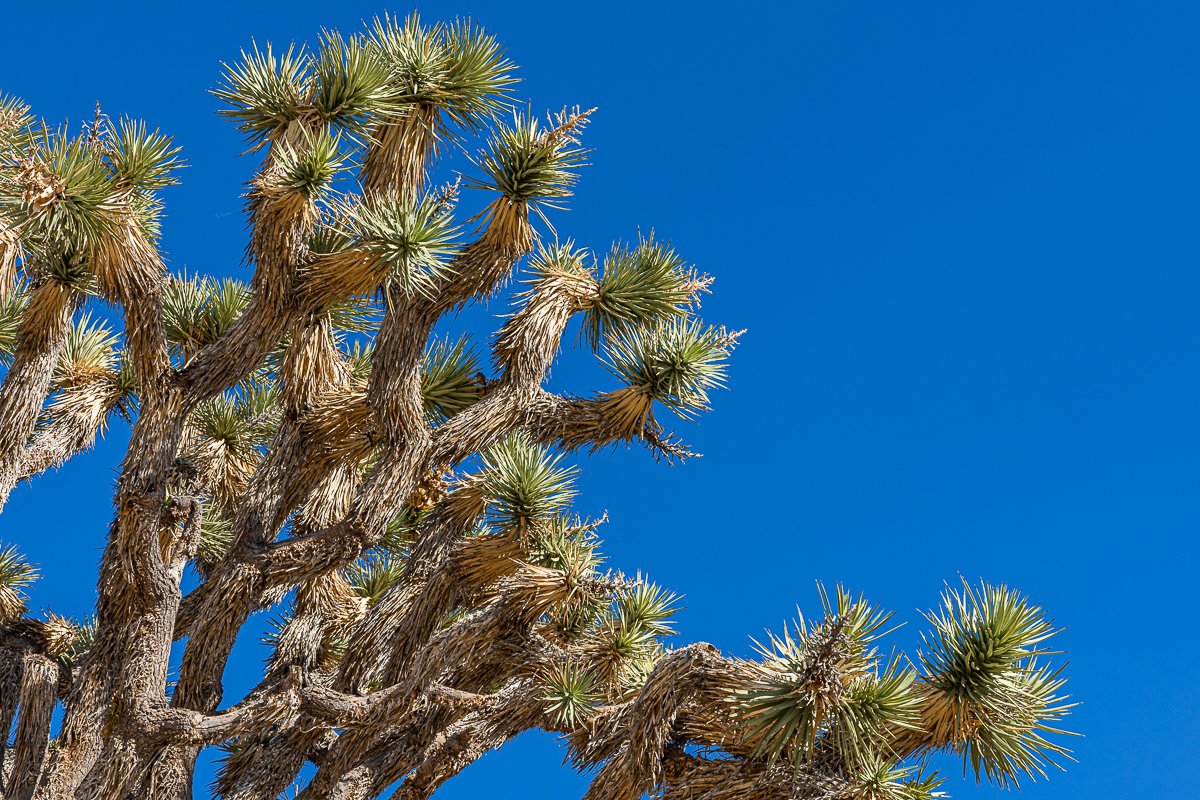The Fortynine Palms Oasis is a natural oasis in the Mojave Desert, located in the lesser-known northern part of Joshua Tree National Park in Southern California. The oasis is named after the forty-nine Washingtonia filifera palm trees that are found there. These palm trees thrive in the desert environment and can grow up to 75 feet tall. The oasis has been used by various Native American tribes, such as the Serrano and Chemehuevi, for thousands of years as a source of water, shelter, and food. In the early 1900s, gold miners established a camp at the oasis and built a few structures that can still be seen today. Today, it is a protected area of the park and its water levels are carefully managed in order to conserve this incredible habitat.
joshua tree
Cholla Cactus Golden Hour
As promised, this week I am featuring my second set of Cholla Cactus Garden images - and dare I say, these are even better! Every morning at Joshua Tree National Park, a warm golden light illuminates the spiny cacti, casting an incredible glow over the desert landscape. The scene is nothing short of mesmerizing, especially on a cold and perfectly clear day. I hope the images I have shared here succeed in capturing the magic of the desert in these early hours, and that you love them as much as I do!
Hall of Golden Light
Few landscapes leave me completely speechless, but this stunning sunset at the Joshua Tree National Park’s Hall of Horrors did just that. This place is named after its eerie rock formations, which resemble dungeons and other creepy structures. (Can you spot a skull-shaped rock in the images below?) It is also a popular hiking and climbing spot, and boasts the best sunset views in the entire park - or at least, I think it does!
Enjoy these images of a stunning clear day over the Joshua trees and rocky scenery surrounding them, under the changing lights and tones of an autumn sunset.
Indian Cove Nature Trail
The Indian Cove area in Joshua Tree National Park was originally used by the Serrano and Chemehuevi Native American tribes for thousands of years and still contains many important cultural sites and artifacts. The area was also used by cowboys and homesteaders in the late 1800s and early 1900s, and there are still remnants of old cabins and corrals in the area. Today, Indian Cove is a popular camping and hiking destination. We made a quick stop during our visit to walk the 1.2-mile loop Indian Cove Nature Trail, which is known for its unusual rock formations. It did not disappoint!
Jumbo Rock Formations
Jumbo Rocks is one of the most popular spots in Joshua Tree National Park, and it's easy to see why. These formations are the result of a complex granite geological history that dates back millions of years and were eroded by the elements into incredible shapes.
Skull Rock (featured at the end of this post) is one of the most iconic and recognizable rock formations at Jumbo Rocks in Joshua Tree National Park. The formation gets its name from its striking resemblance to a human skull, with two large eye sockets and a nasal cavity. See if you can also spot the aptly-named Penguin Rock, which is hidden away in the Jumbo Rocks Campground by a beautifully twisted juniper tree.
Sunrise at Barker Dam
Barker Dam in Joshua Tree National Park is a historic site that was built in the early 1900s to provide water for cattle and mining operations in the area. The dam was constructed using local materials, including boulders and concrete, and was designed to capture and store rainwater. It is named after William Barker, one of the early ranchers in the area who was instrumental in its construction.
During my visit, I woke up early to catch the sunrise at Barker Dam, and boy, was it worth it! The sky turned into a beautiful canvas of vibrant purples, pinks, and oranges, and as the sun crept up the sky, the rest of the desert turned an intense shade of gold. Even though the dam was dry (and so we missed out on water reflections), the Joshua Trees and rock formations more than made up for it!
A Walk Through the Mojave Desert
During my visit to Joshua Tree National Park in California and I was blown away by the unique landscapes of the Mojave Desert. The rugged terrain and unique flora and fauna are spectacular even in the harsh midday light. I especially enjoyed photographing the iconic Joshua trees up close. These tall, spiky trees are only found in this part of the world and are a true symbol of the desert. Their twisted branches and rough bark make for stunning photos against the blue sky. The stark beauty of the desert landscape is something that everyone should experience at least once in their lifetime. I hope these photos will inspire you to visit this stunning national park and experience its beauty for yourself!

